
70 Basement Floor Ideas
You head down the stairs to your basement and cringe. You have all of this square footage down there, but it’s totally useless and is more of a storage area than a liveable part of your home.
It’s time to change that. Sure, you can use a part of your garage as storage, but that doesn’t mean you can’t use another part for something else.
Start your basement remodel by deciding how you want to use the space. This will help you decide what flooring type will work best.
These basement floor ideas will get you inspired to finally finish your basement and start enjoying it.
See more about - 50 Basement Storage Ideas
Table of Contents
1. Cozy Carpet Basement Floor Ideas
Give your basement a living room feel by covering the floor with carpet. What’s nice about this flooring solution is that it will dampen sound and help to insulate the space.
This will cut the echo and chill in the room. However, you’ll want to be careful about moisture. You don’t want mold to grow because the carpet never gets fully dry.
Instead of laying down a full single sheet of carpet, you can lay down individual carpet tiles.
You can easily pick one up and re-lay another should one get damaged or stained. This makes for a smart flooring solution if you have small children.
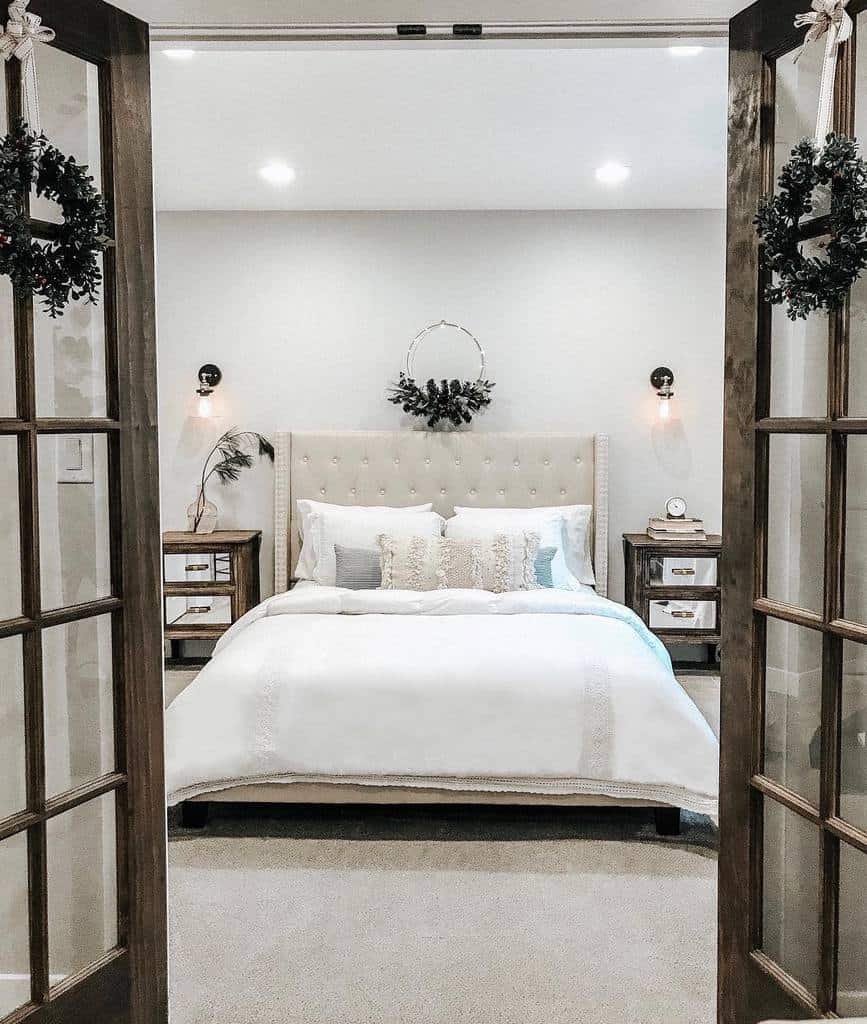
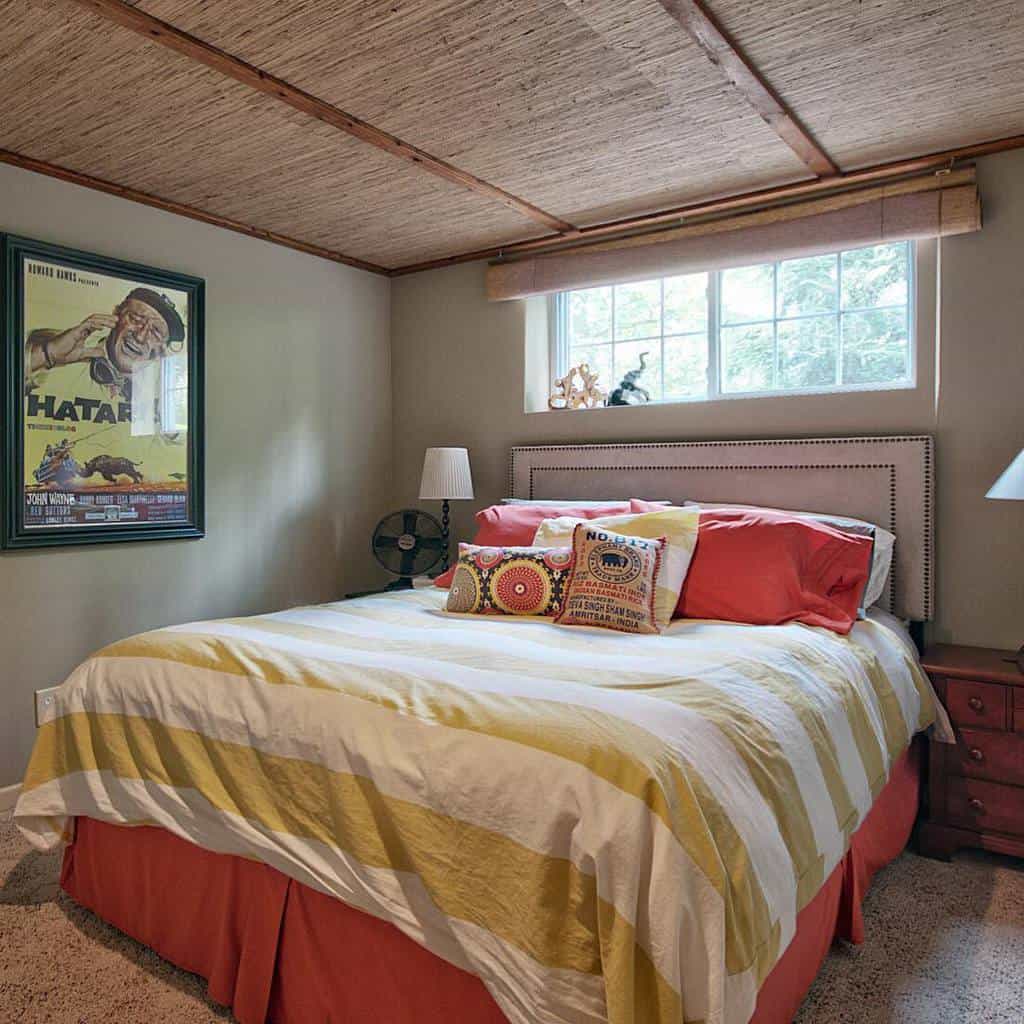

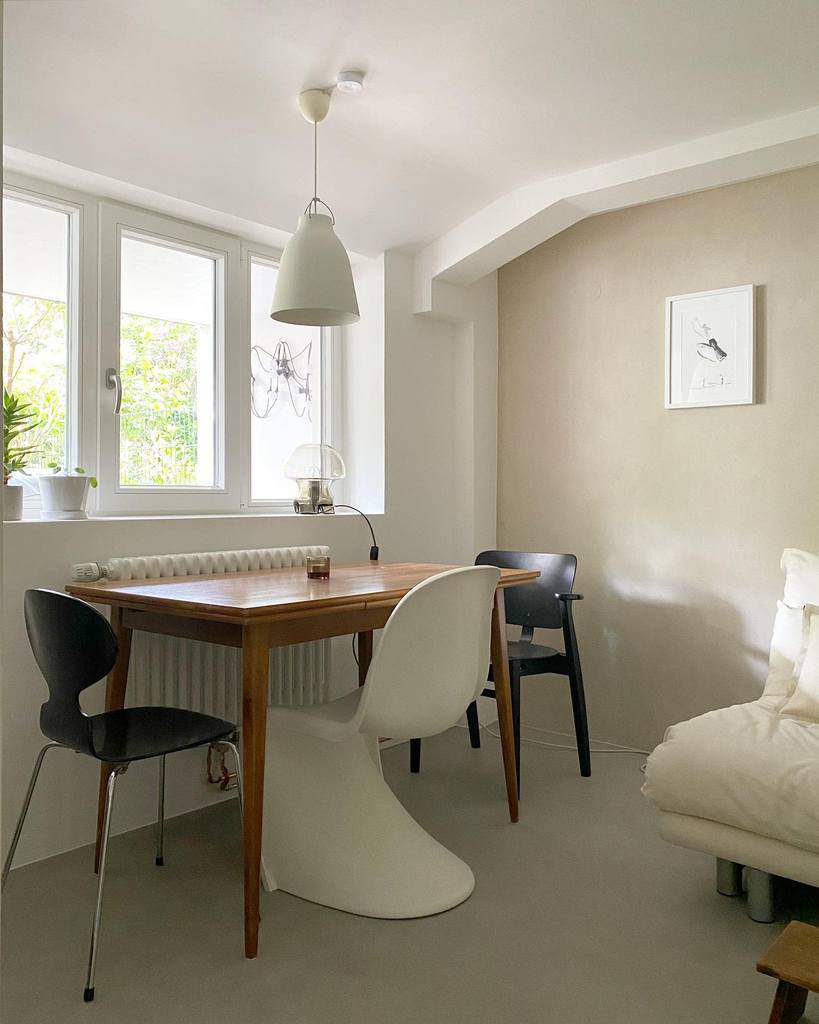
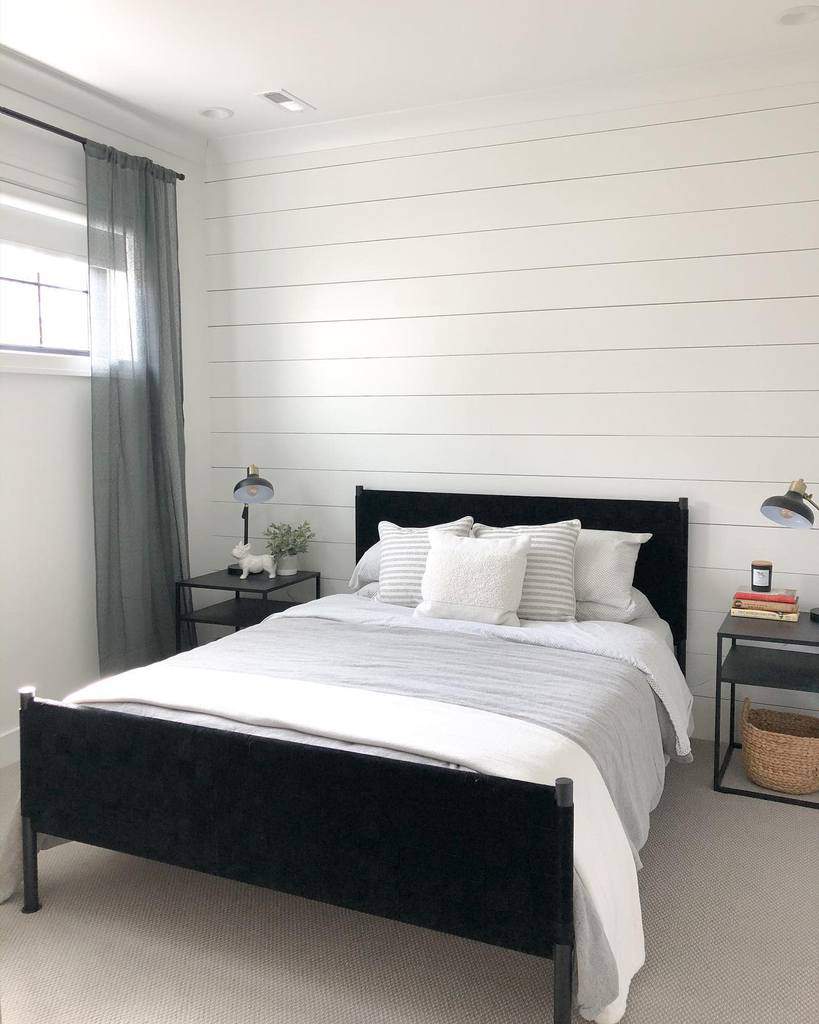
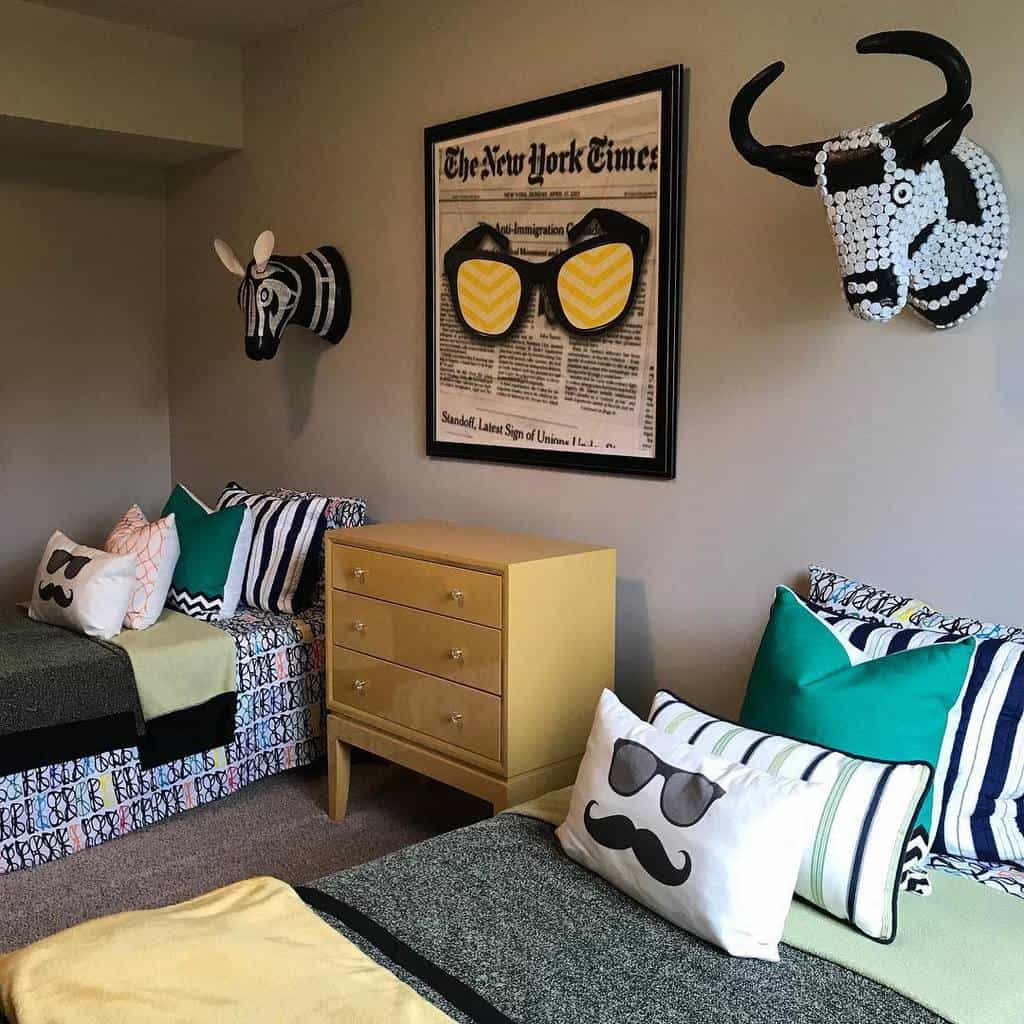
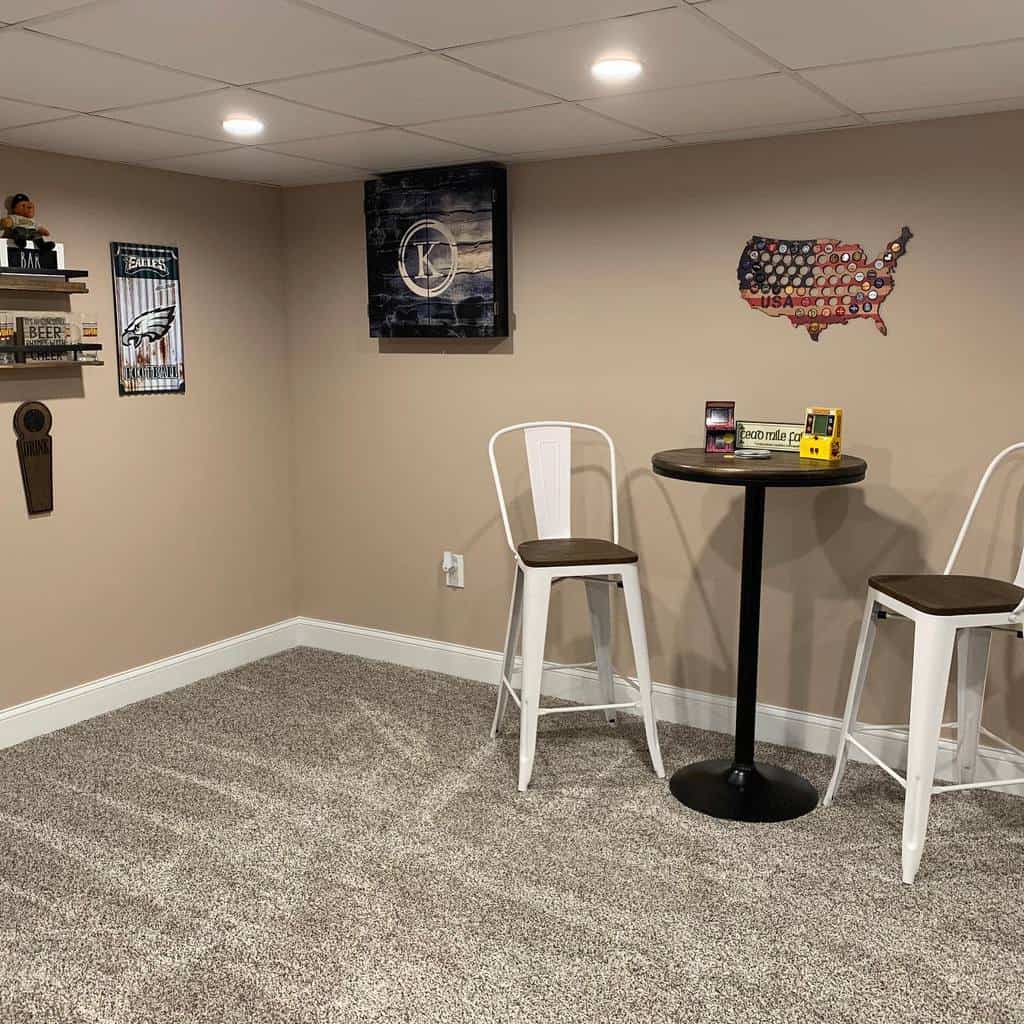
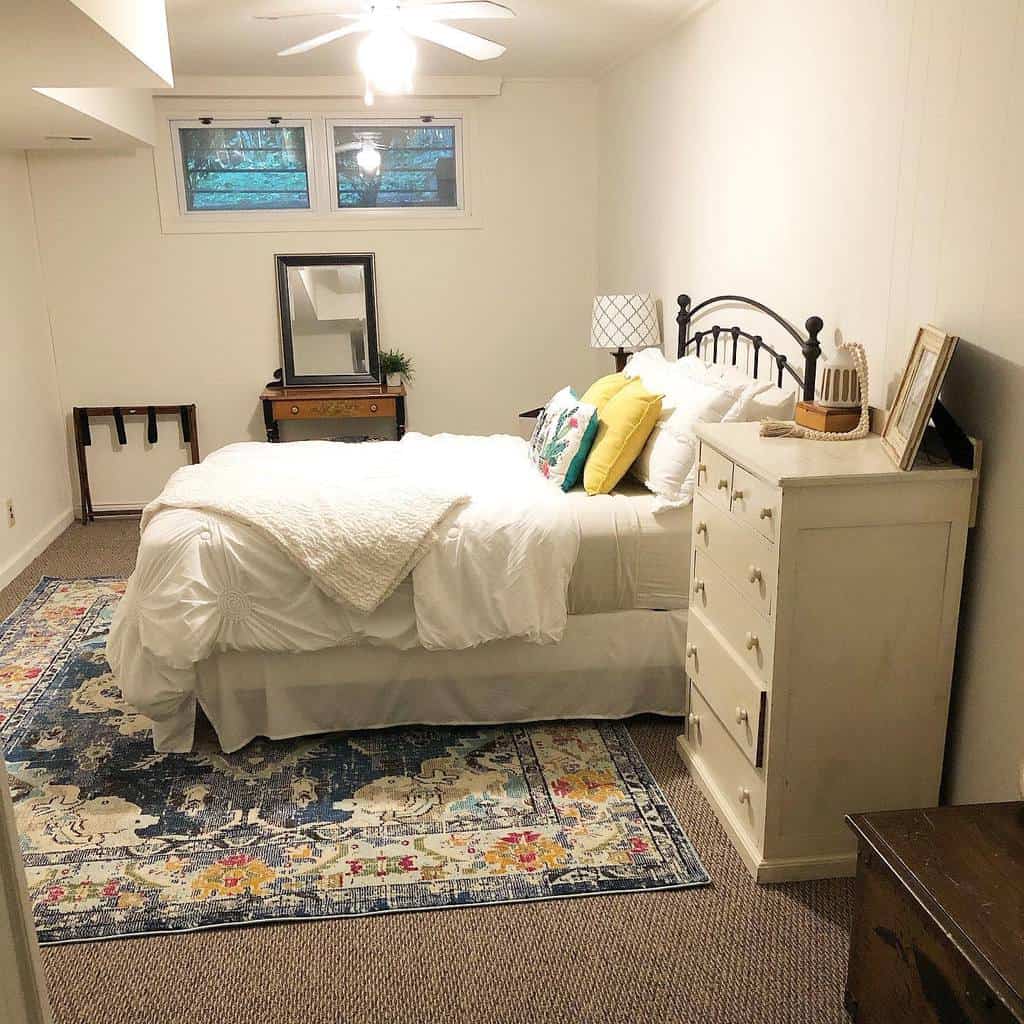

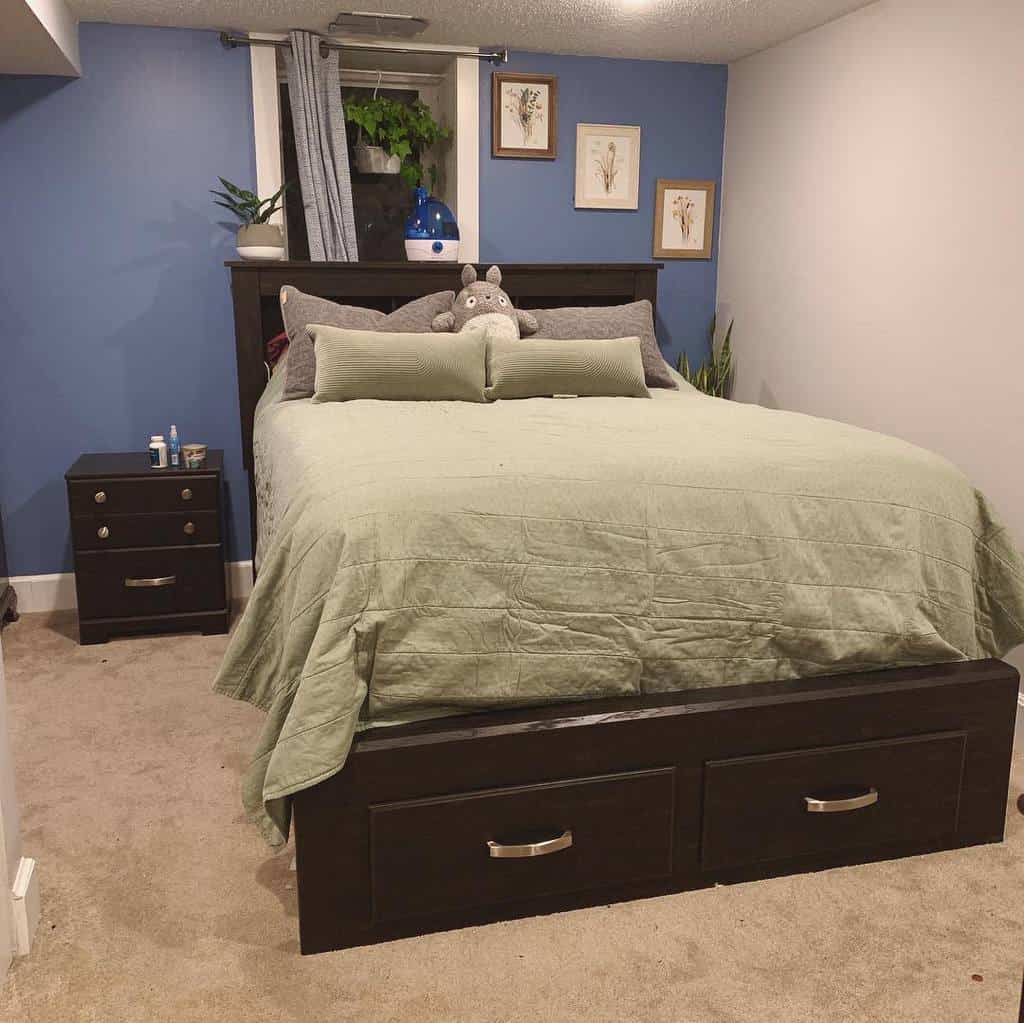
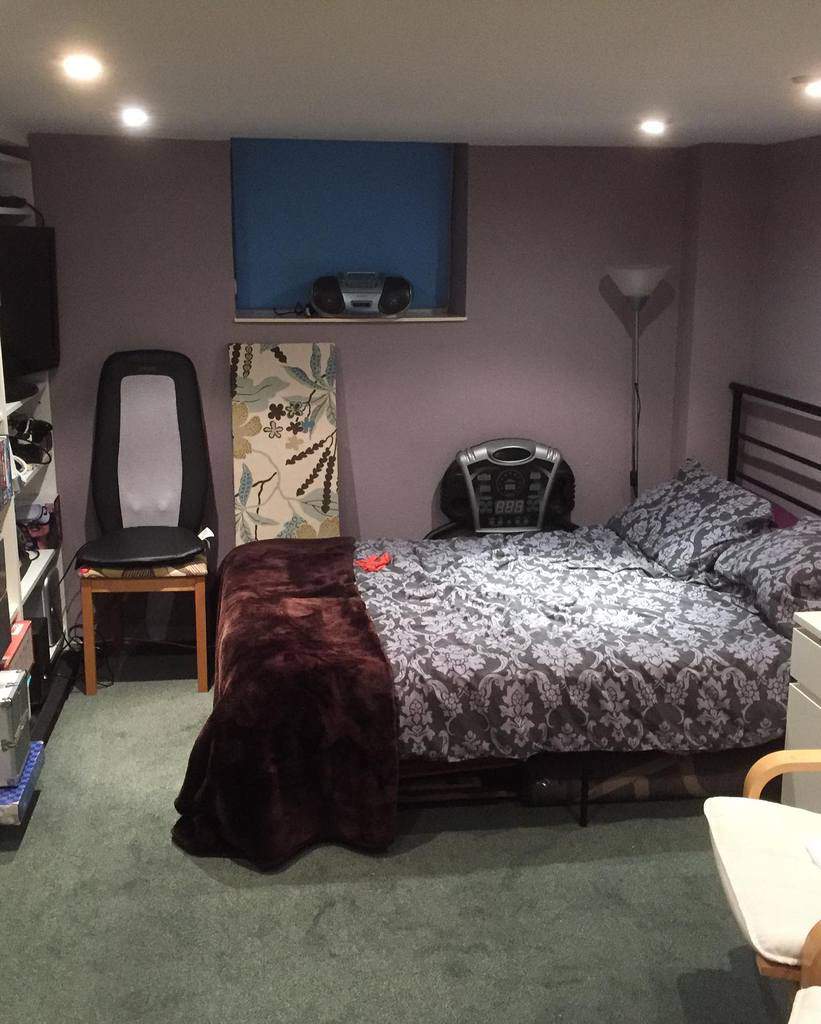
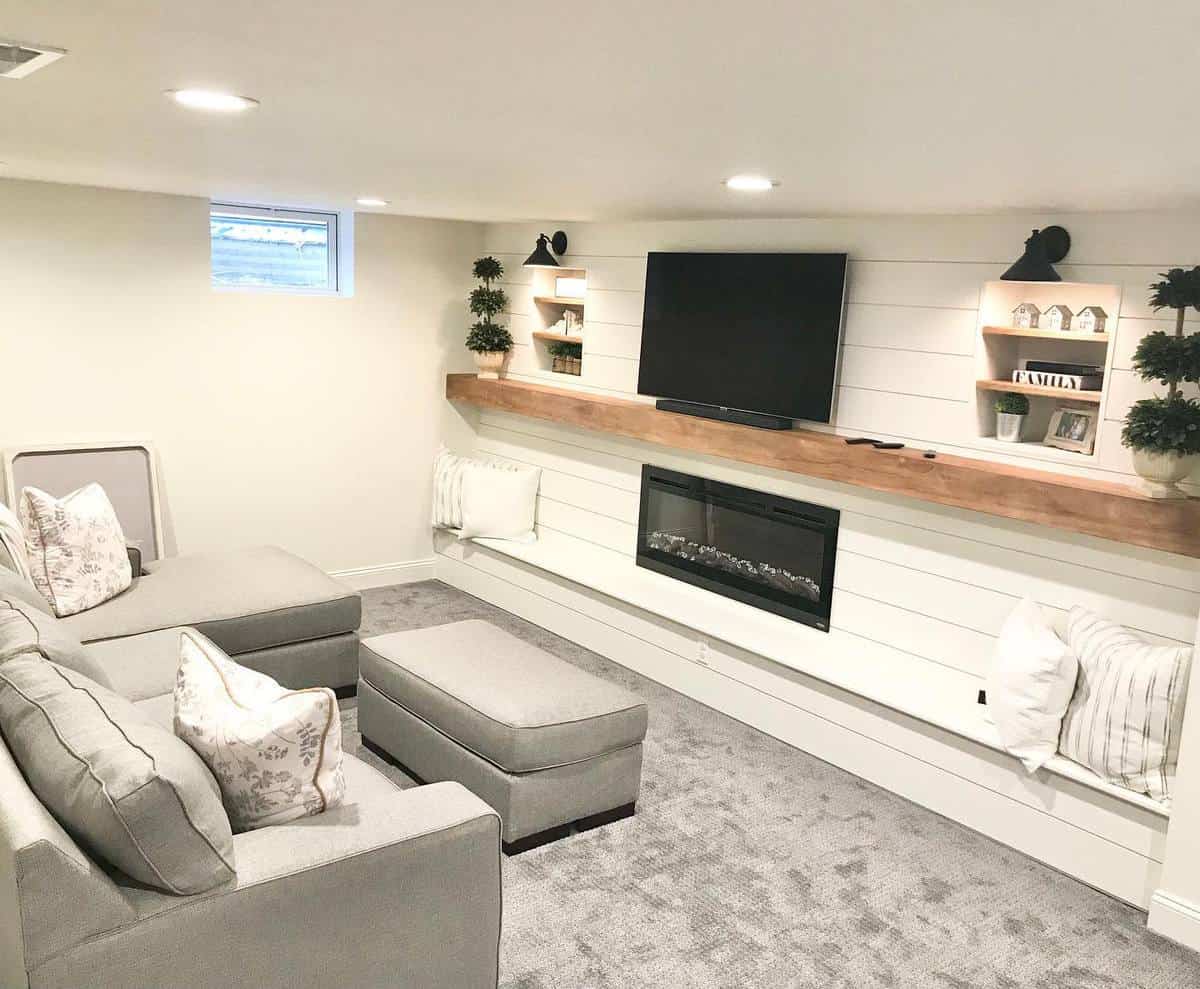
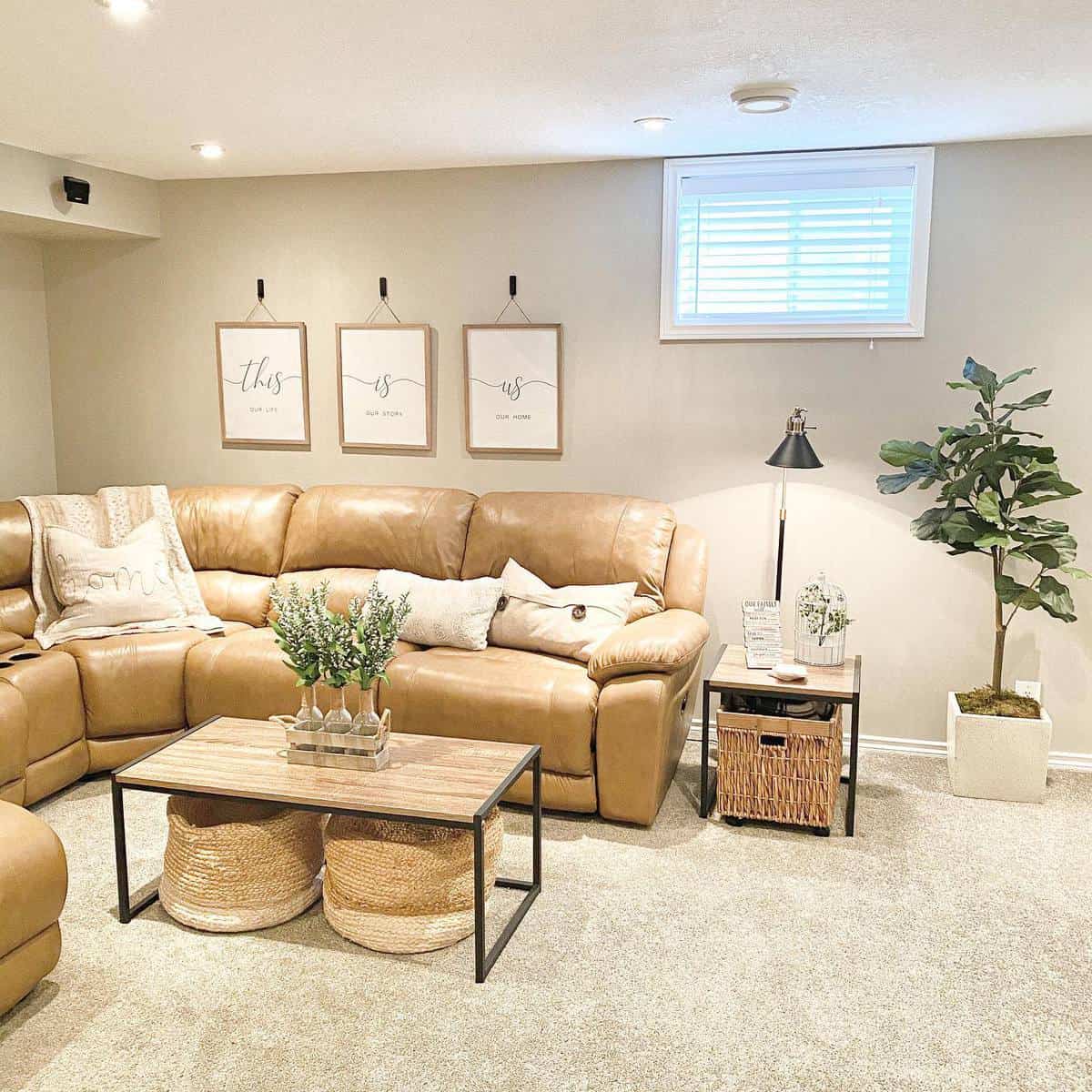
2. Beauty and Durability
Your unfinished basement probably already has a concrete floor. This is the concrete slab that was poured when building the foundation of your home.
A simple and affordable method for finishing your basement remodel is to embrace the concrete flooring and leave it exposed.
However, you need to give your concrete basement floor a treatment to make it look nice and not like a construction site. Try a stained concrete look.
There are several colors available, and you can combine colors for a marbled look. Then finish the concrete with a sealant to give you a smooth finish.

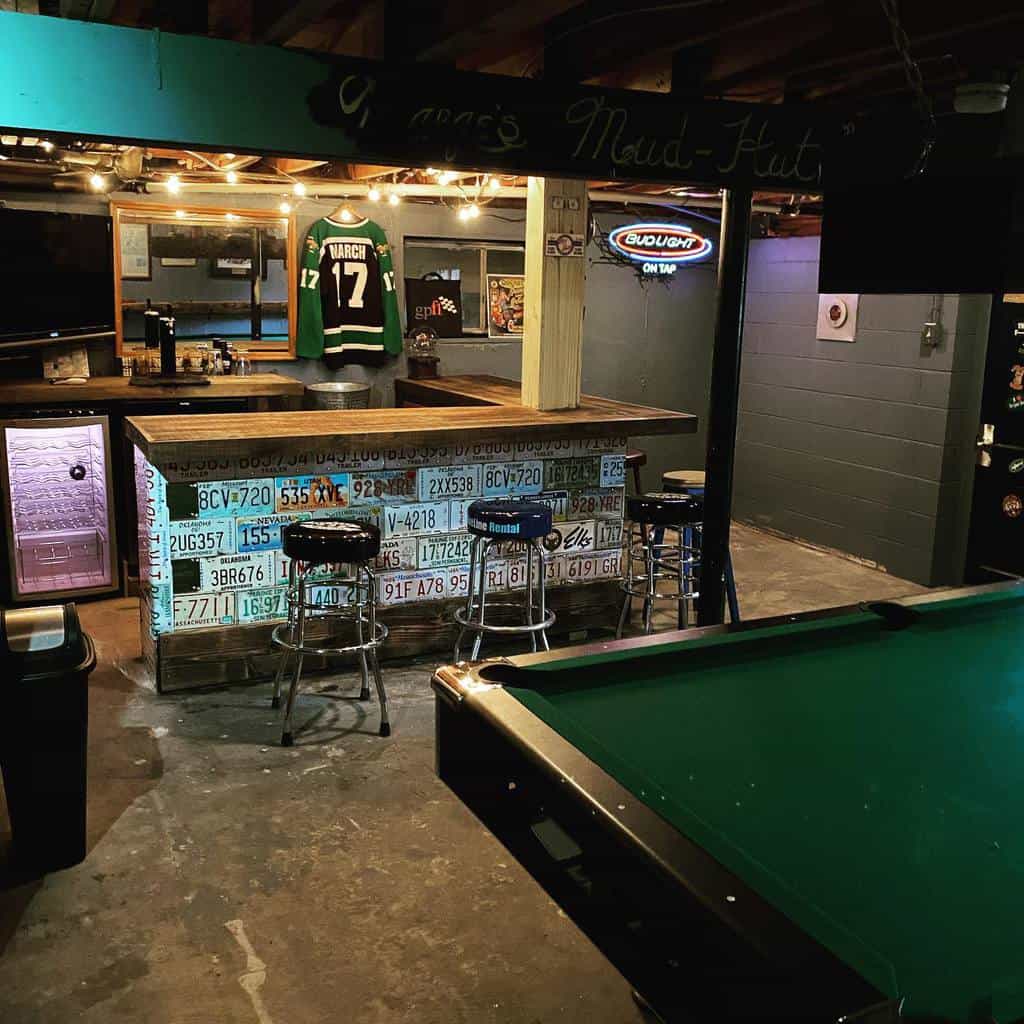
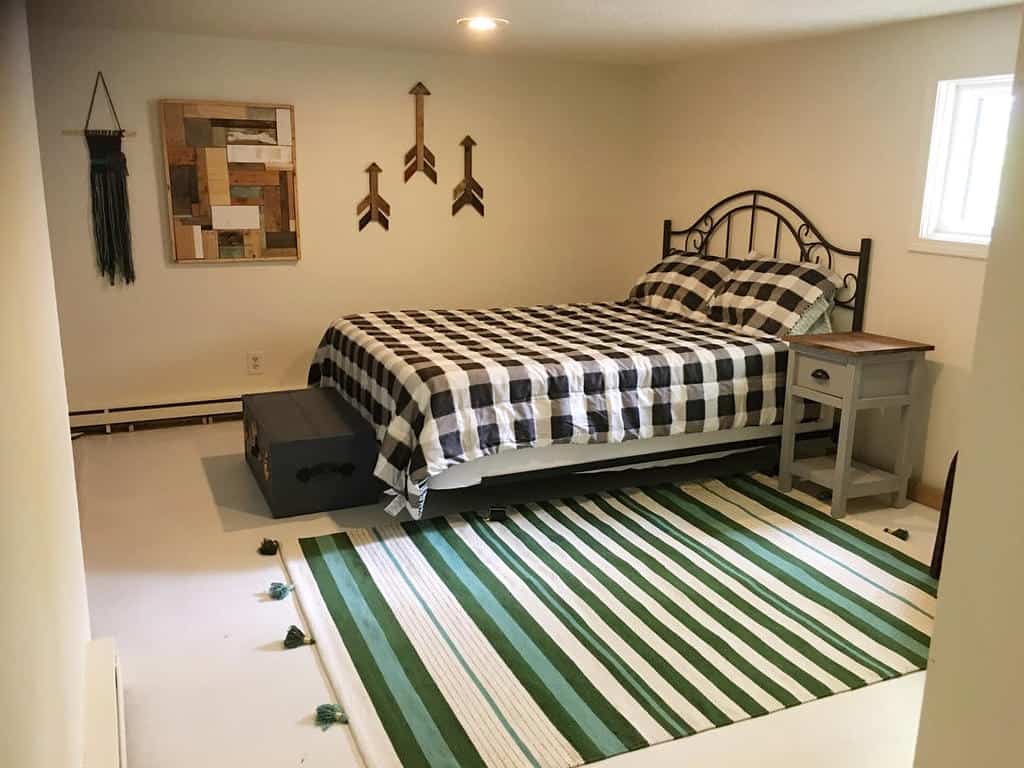
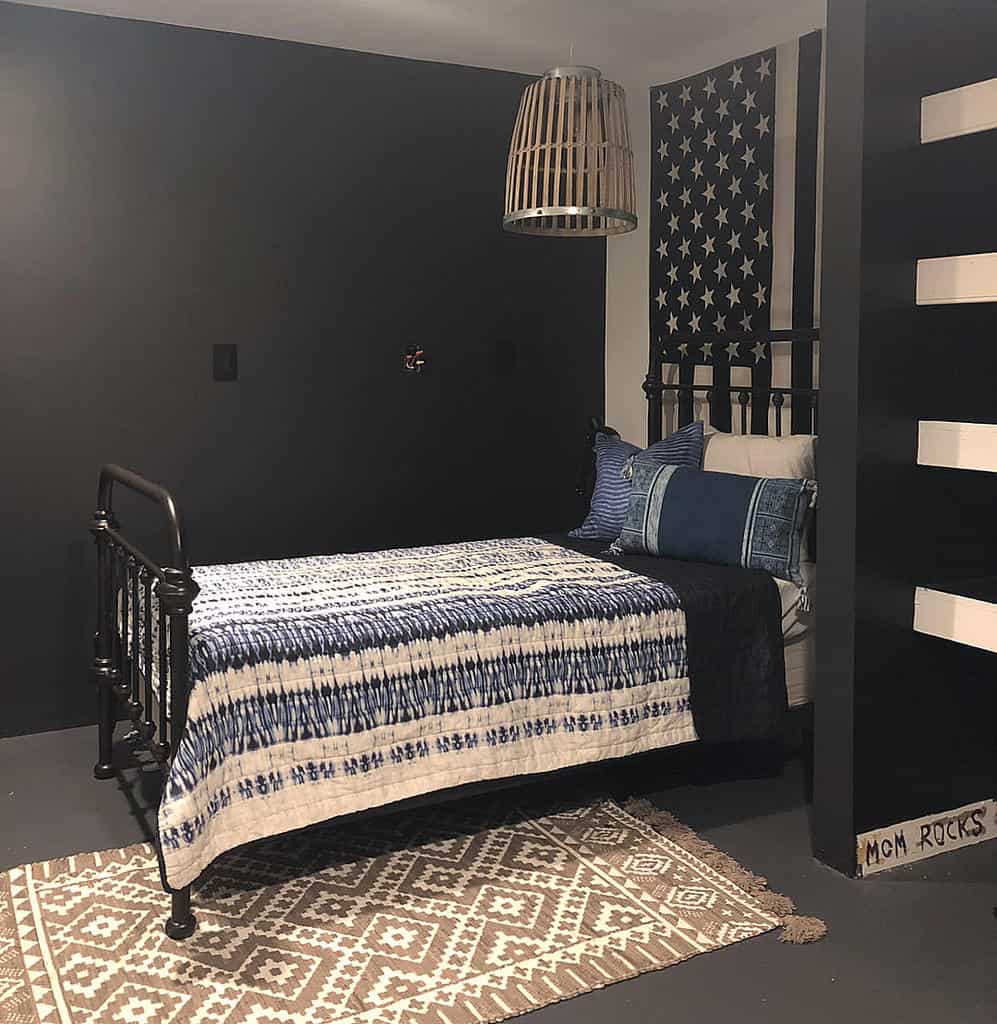
3. DIY Flooring Solutions
You can have a beautifully finished basement by putting in some elbow grease and doing a DIY project.
One popular basement flooring idea is to lay down rubber flooring. This gives you a tough and durable floor covering that’s also impervious to water.
The flooring comes in rolls or squares that you lock together. You can then use your basement as a home gym, man cave, workshop, or children’s playroom. The rubberized floor will cushion the floor, protecting both you and the concrete flooring underneath.
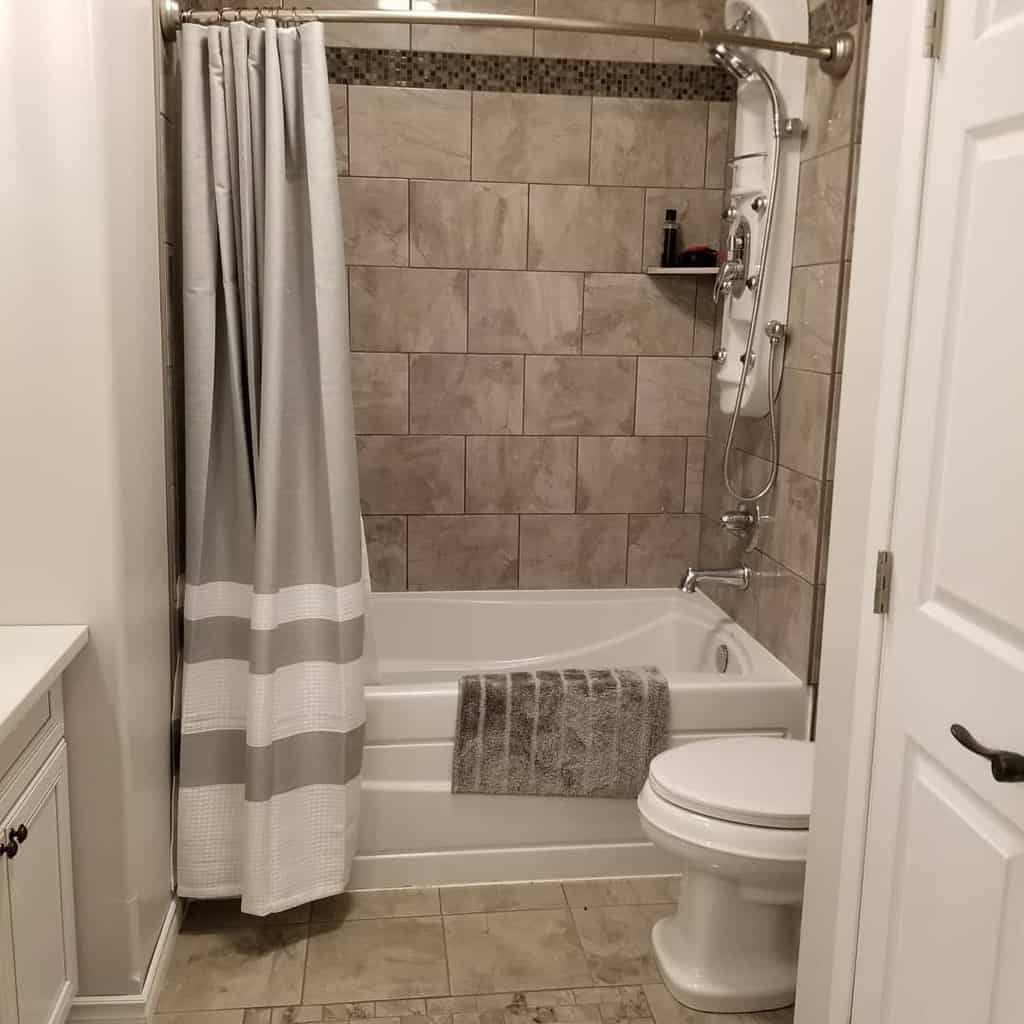


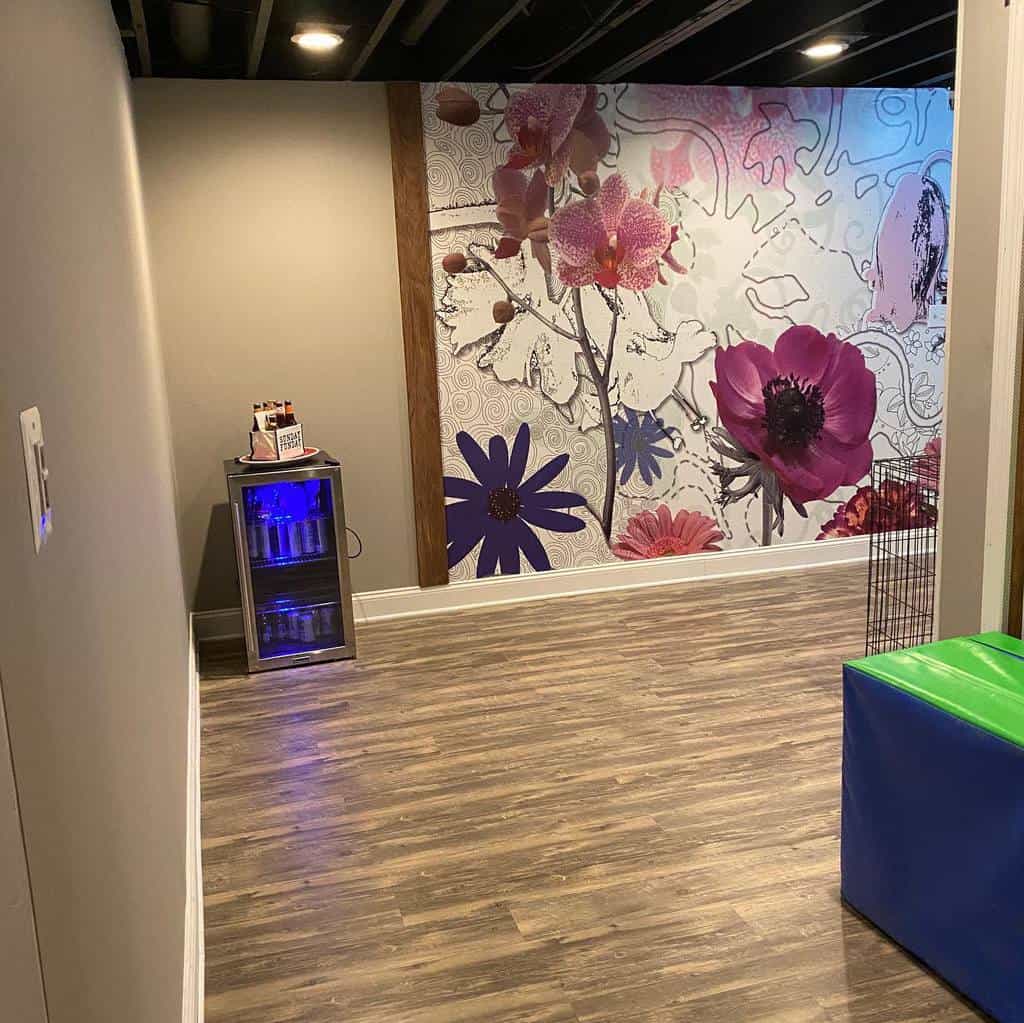
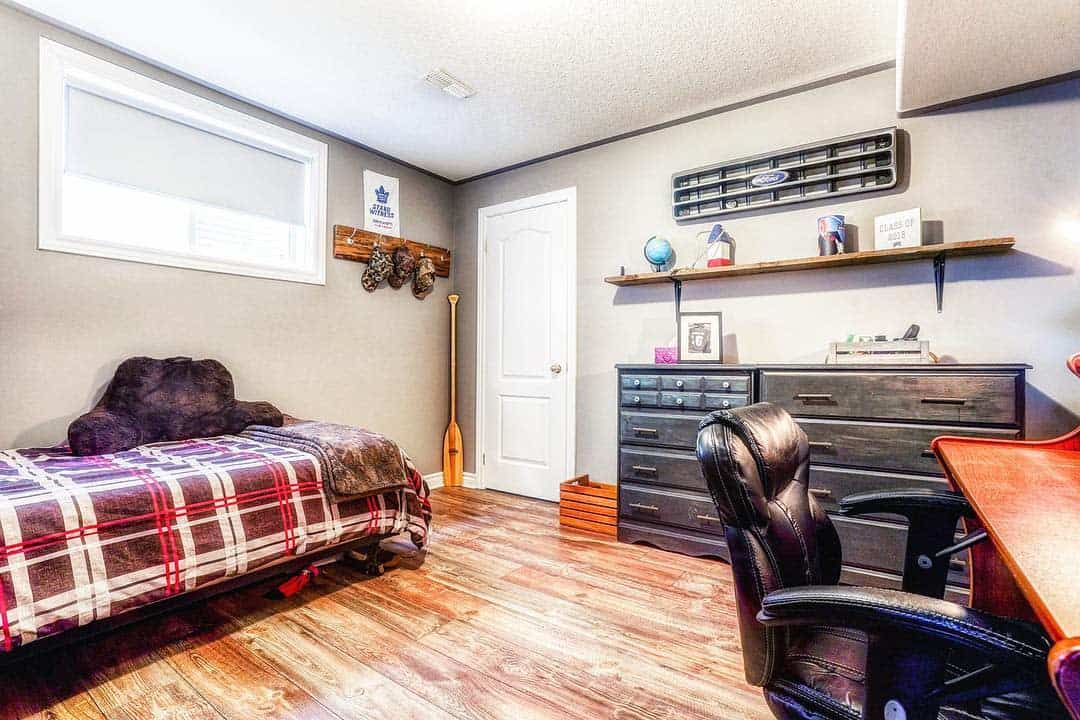
See more about - 51 Low Basement Ceiling Ideas
4. Trendy Flooring Options
Consider using a modern flooring material for your basement finishing. Bamboo and cork floorings are environmentally friendly.
You can choose flooring of varying thicknesses to find the perfect amount of cushion and durability. What’s nice about cork is that it will bounce back, so you don’t have to worry about it permanently denting from heavy furniture.
Bamboo flooring is a great choice if you plan to use your basement heavily. It’s harder than hardwood flooring and is extremely scratch-resistant.
Look for a strand-woven floor for even more strength and durability. It’s also affordable and gives your basement a contemporary look.
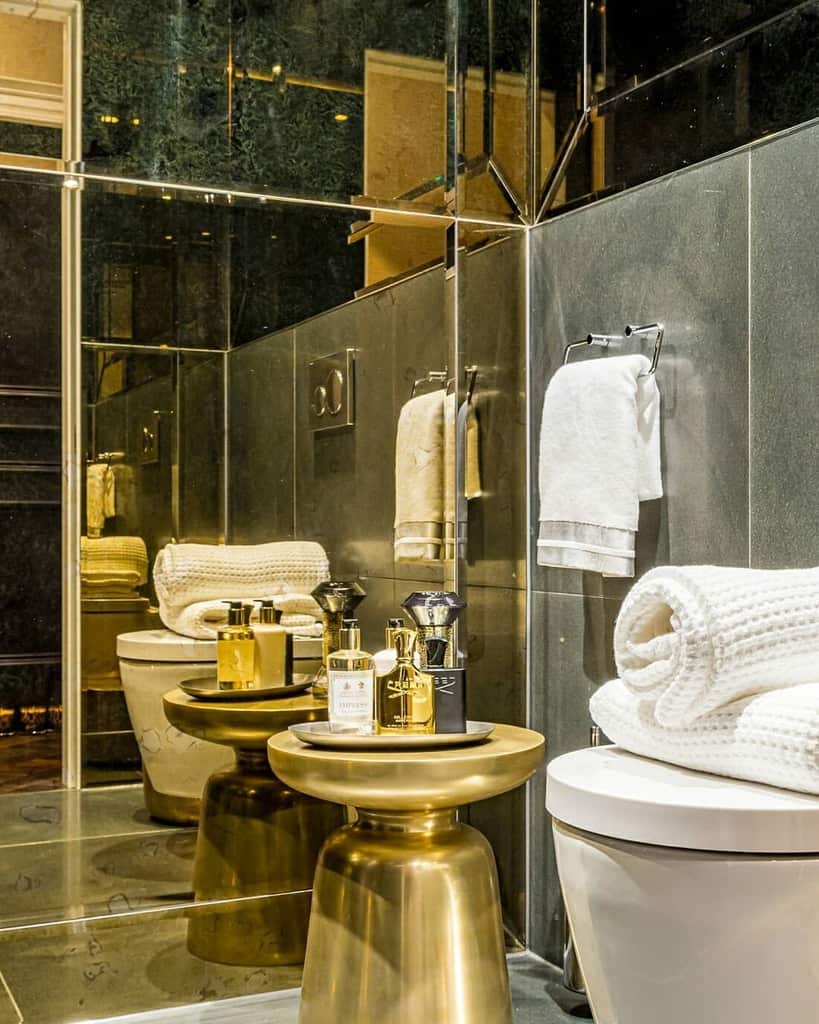
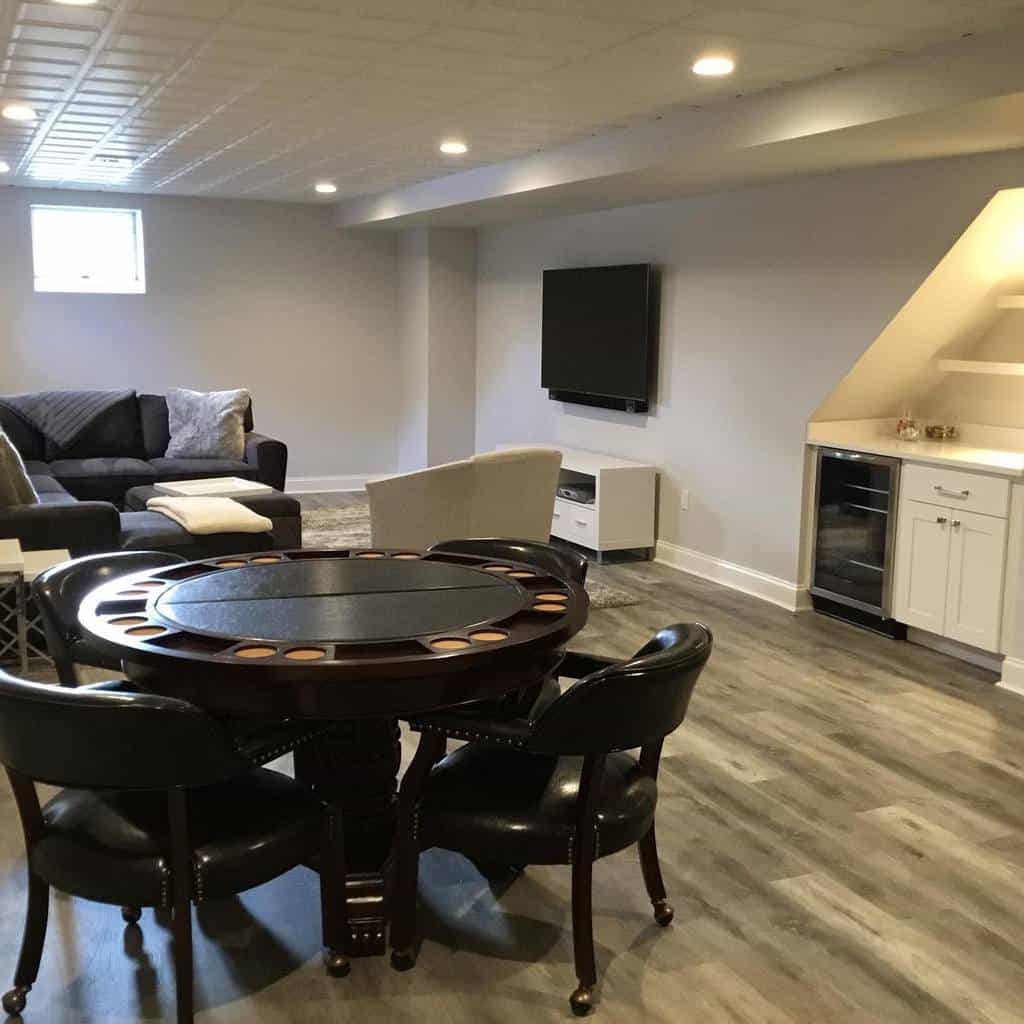
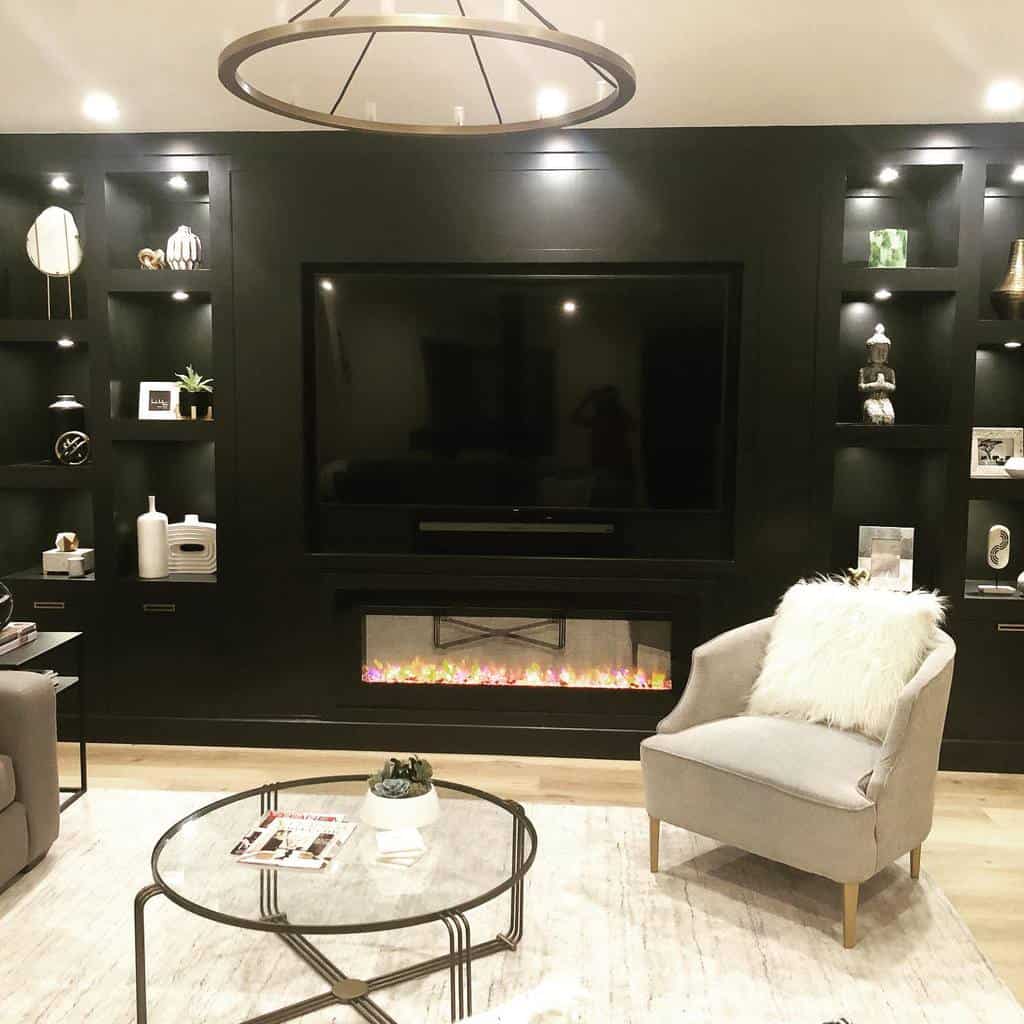
5. Add a Splash of Color
A simple weekend project would be to paint your basement floor. Don’t use just any wall paint; this won’t be durable and look terrible as it quickly starts to peel and chip.
Instead, invest in epoxy basement floor paint. This will bond to the concrete floor and create a durable finish.
You can get creative with this flooring idea. Add color chips to create a more durable and colorful flooring material. Use multiple colors to paint a pattern or large-scale design.
Always follow the manufacturer’s directions closely to ensure you have a professionally finished product. Many paint manufacturers require that you apply a primer before the paint and a masonry sealer afterward.

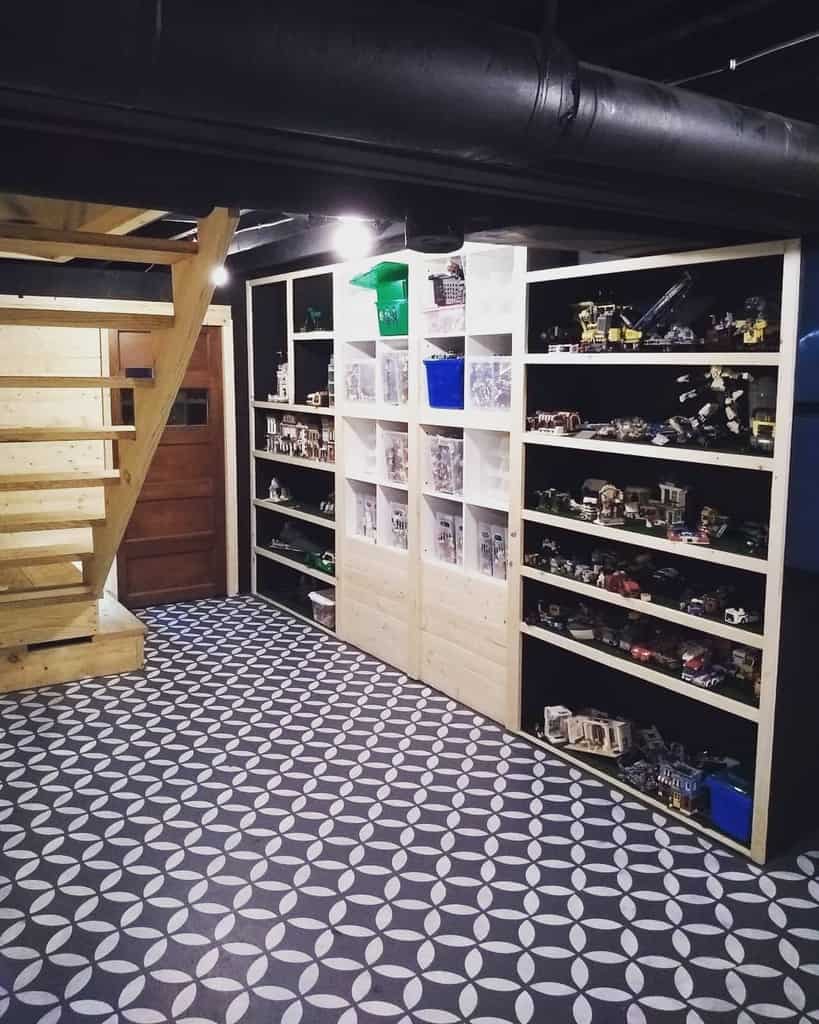

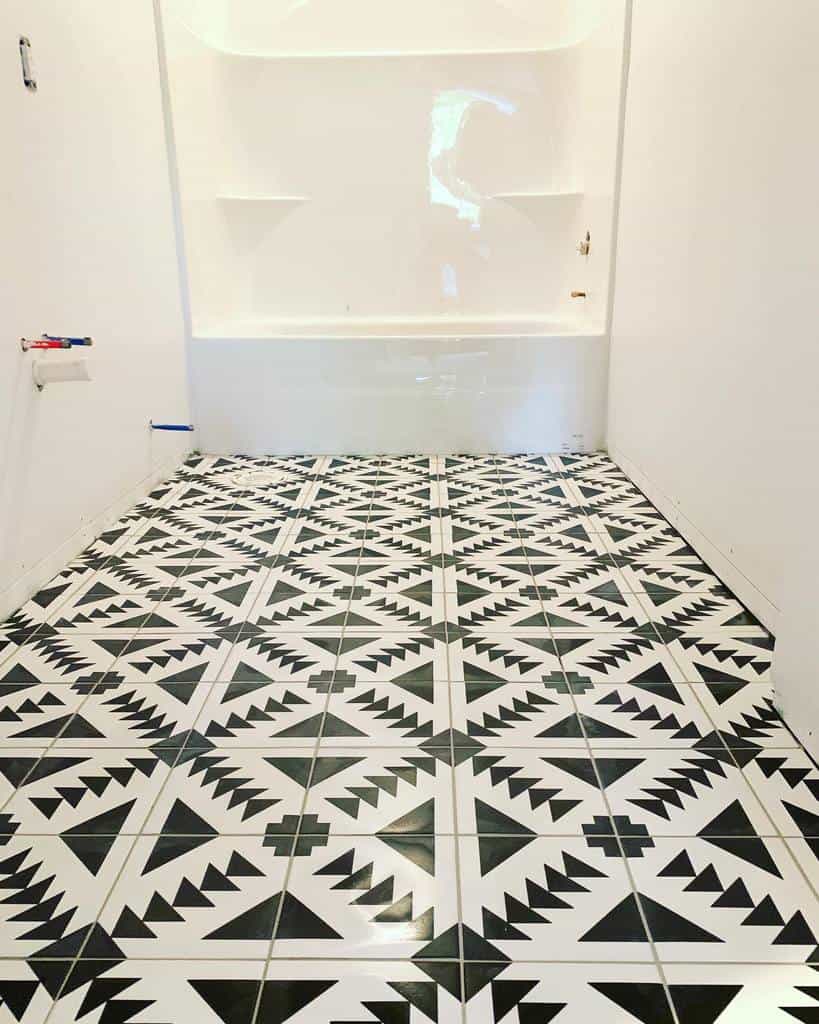

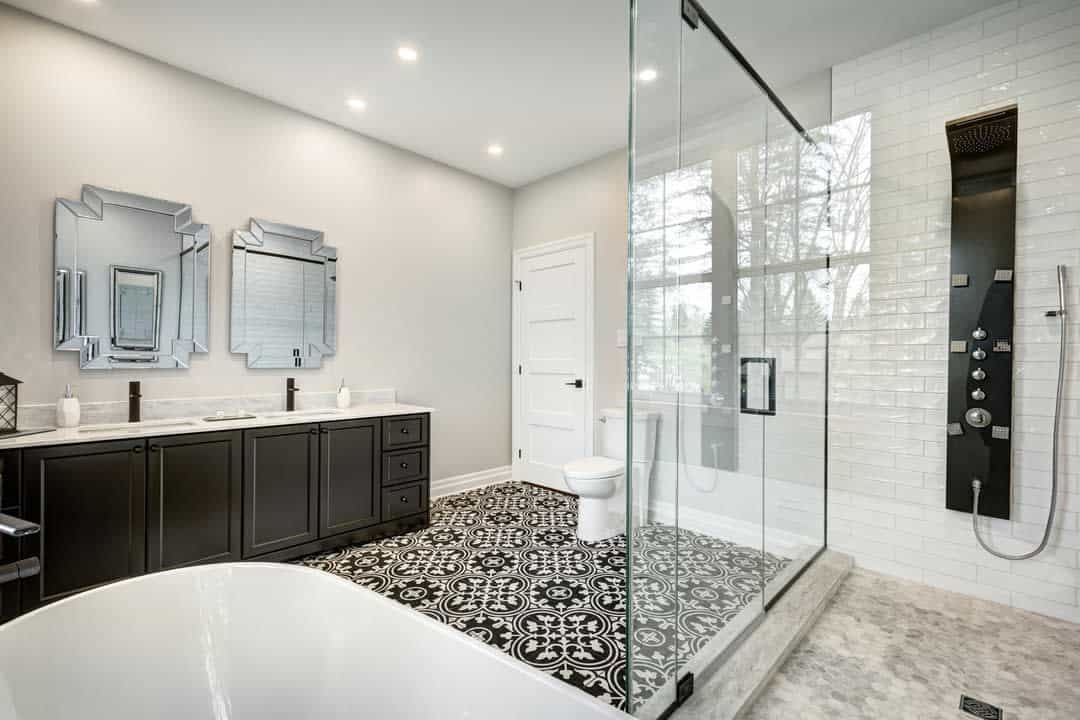

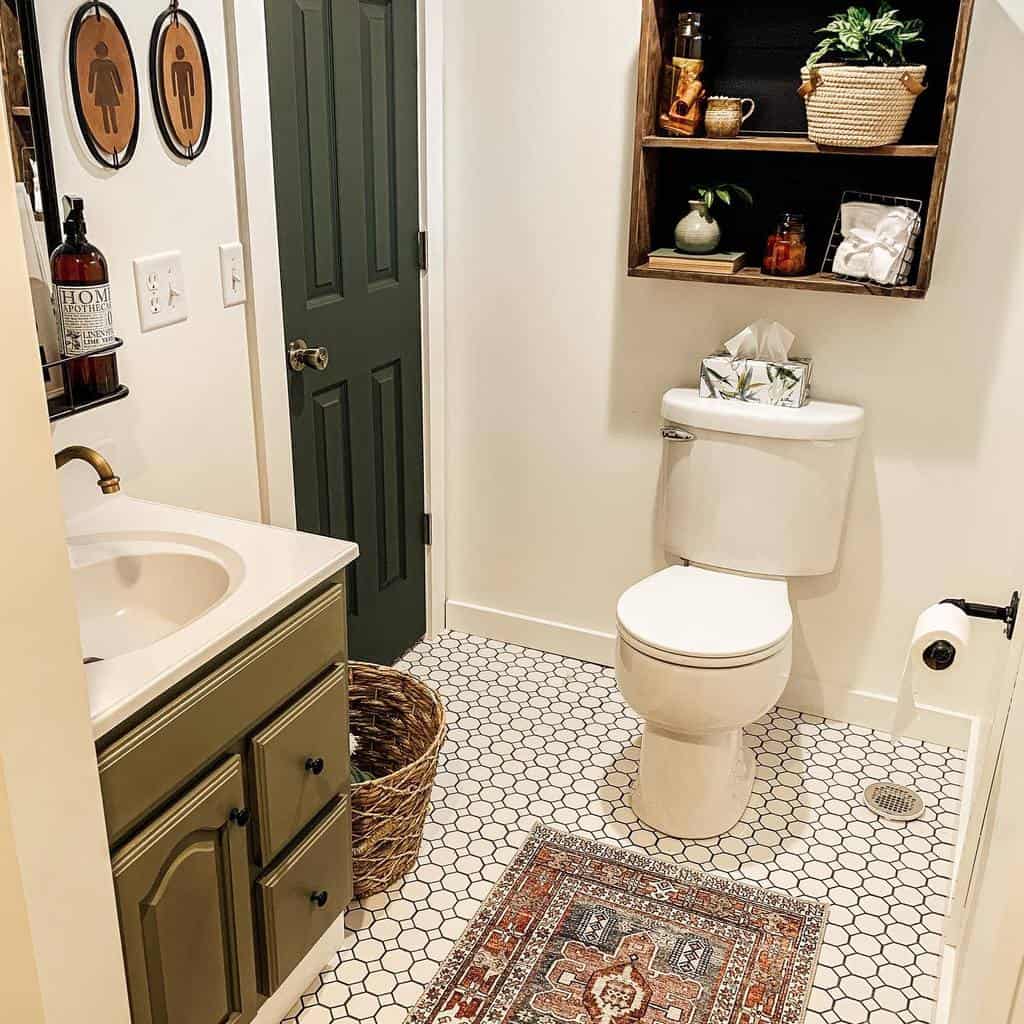
6. Timeless Elegance
Choosing to tile your basement is a smart idea because porcelain tile is durable and impervious to water. Ceramic tile flooring is also a smart alternative.
This type of floor tile is most often used in wet rooms of your home, like the bathroom, kitchen, or mudroom. Basement remodels that include adding a kitchen should include tile flooring because of this.
The only drawback of a tile floor is that it can be more expensive than other flooring options.
You’ll also want to hire a professional to install the tile if you don’t have experience. This can increase the installation cost.
The tile can make your basement feel colder and create echoes. You’ll want to lay down a few rugs to combat these issues.
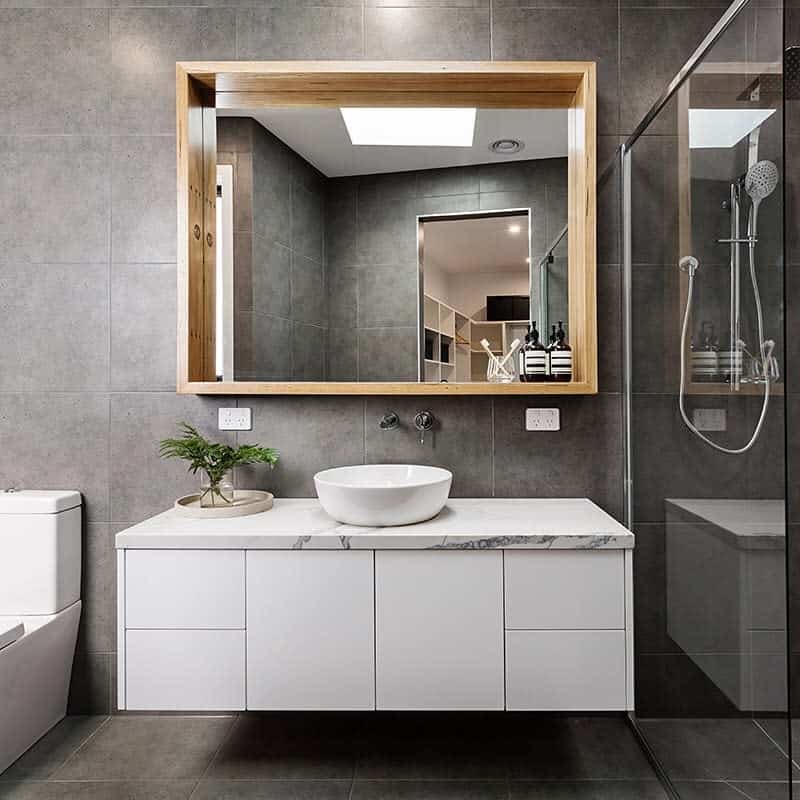




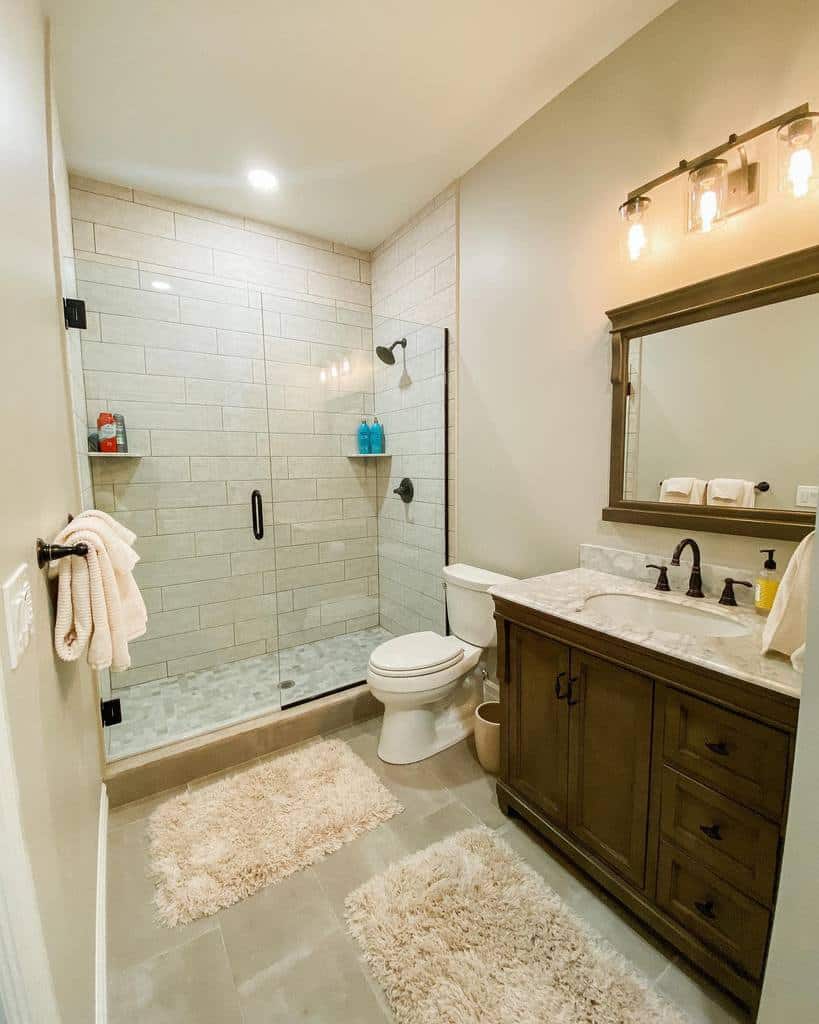
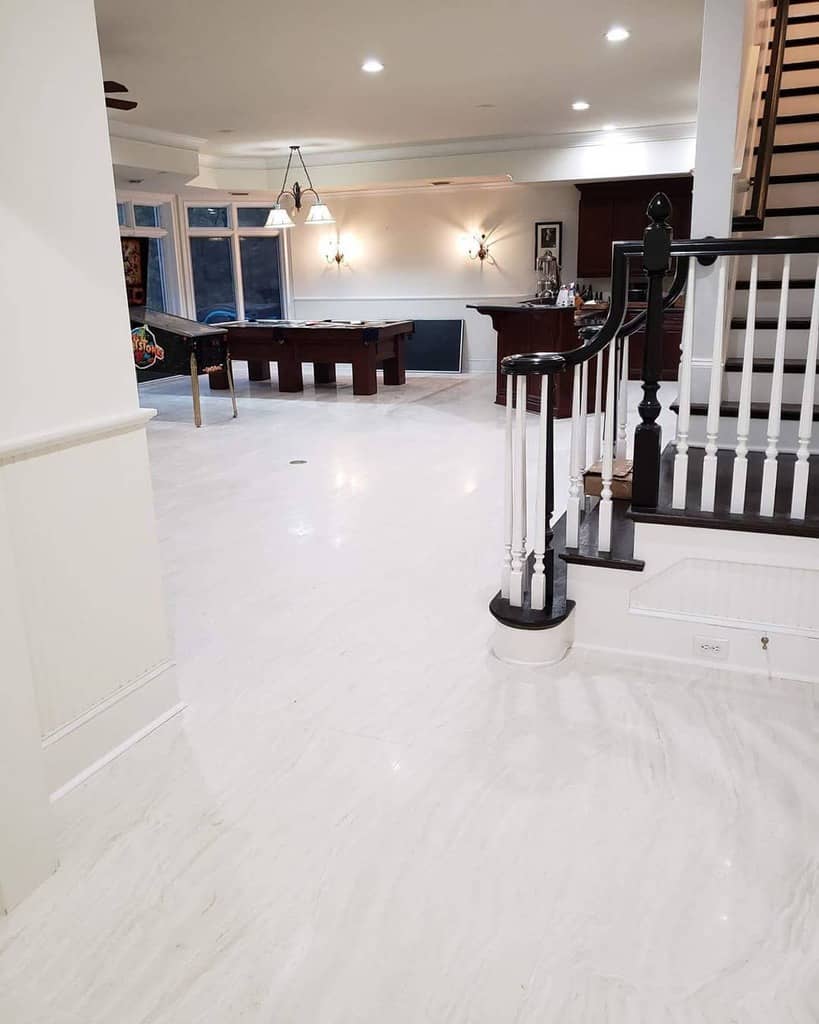


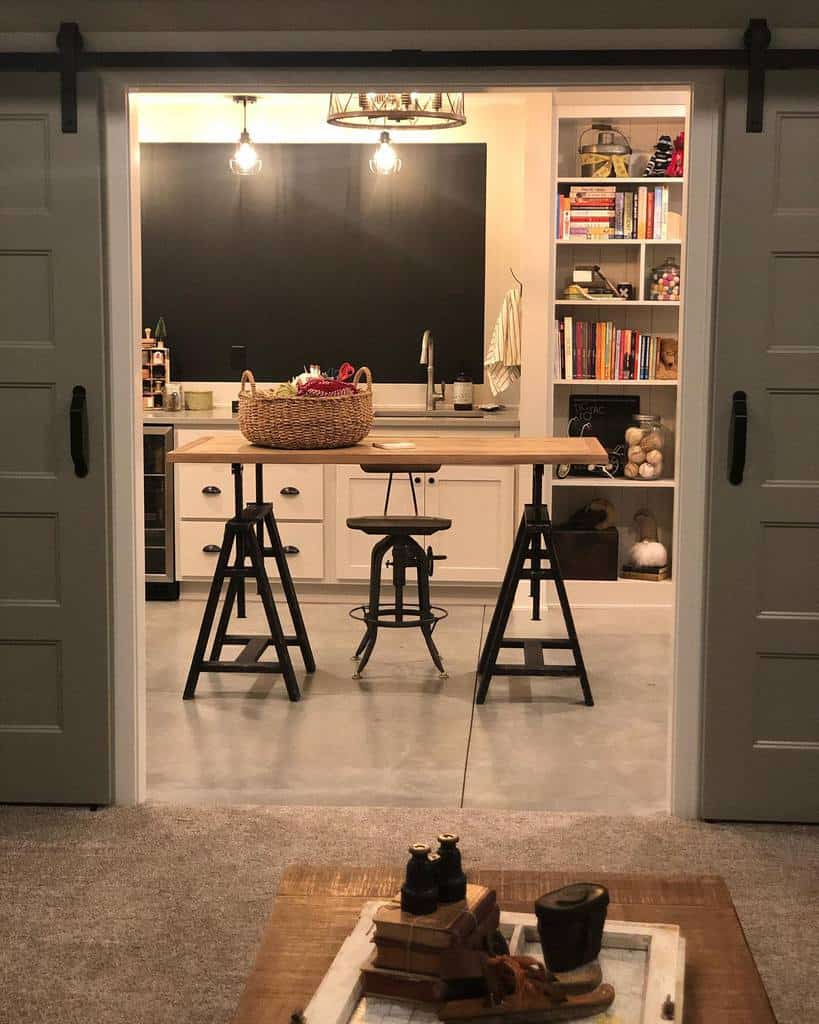
See more about - 45 Basement Kitchen Ideas
7. Embrace the Charm of Unfinished Floors
If you don’t want to finish your basement, then you don’t need to bother finishing the flooring. One smart basement flooring option is to seal the concrete. This prevents moisture from seeping into the basement.
Sealing the concrete also protects the concrete and makes it more durable. Epoxy paint can also keep your unfinished basement floor protected by creating a moisture barrier.
Consider polishing the concrete to give it a smooth texture. This will help the concrete to shine and look finished while requiring minimal maintenance. Use a self-leveling sealant or epoxy to create a smooth surface.
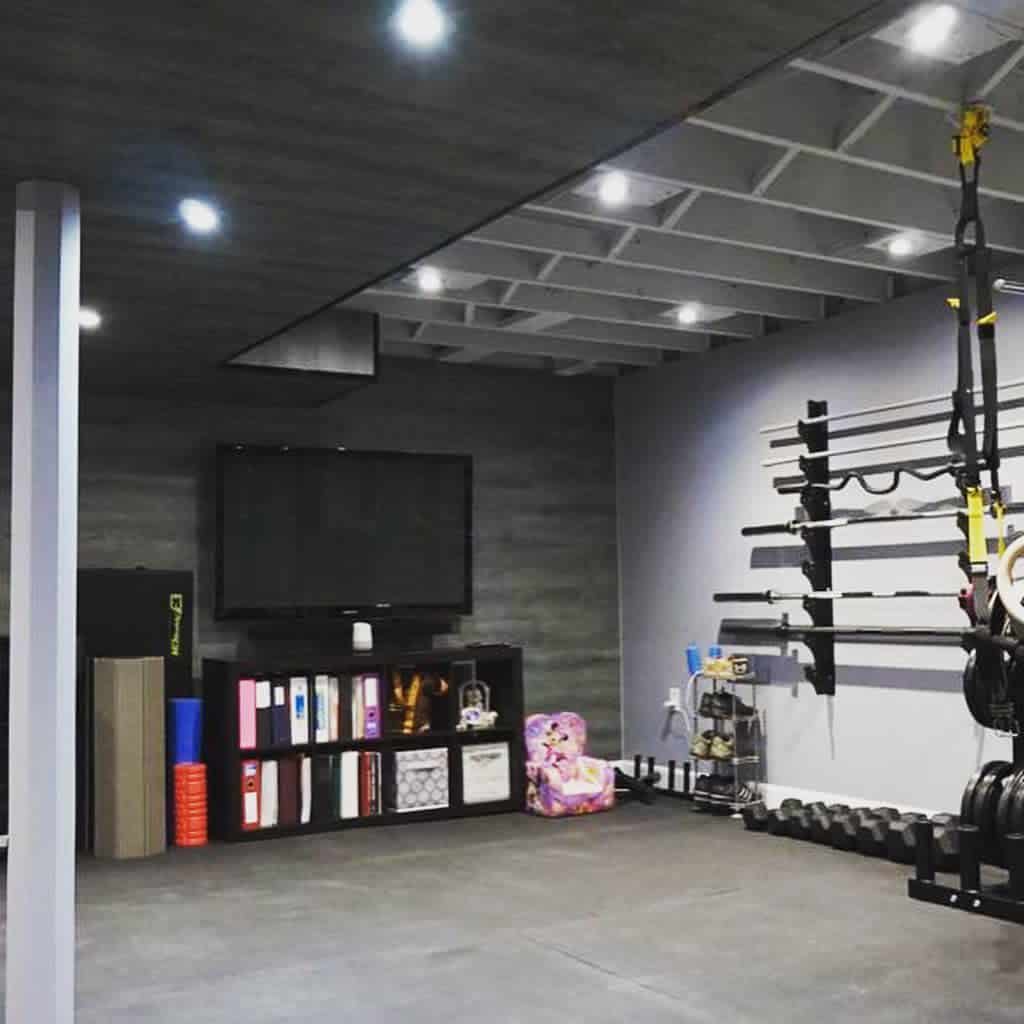


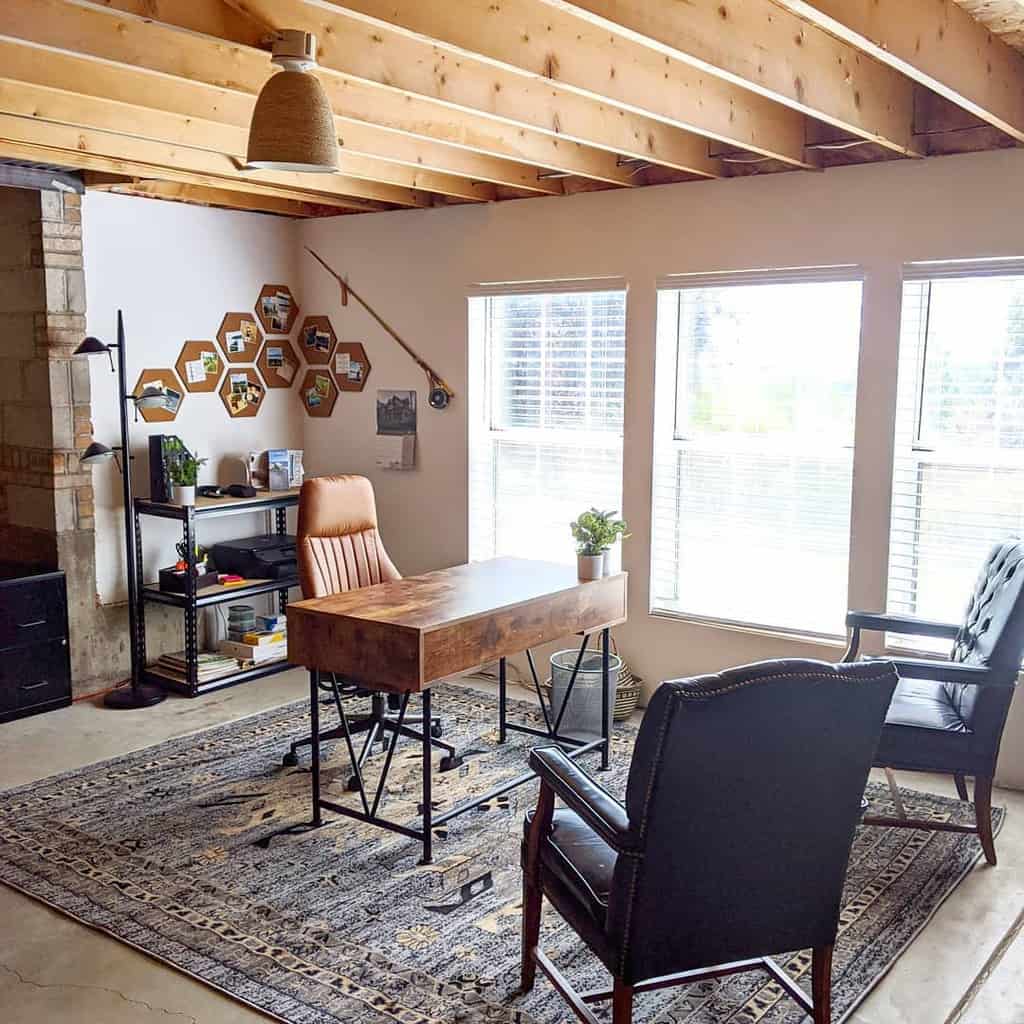

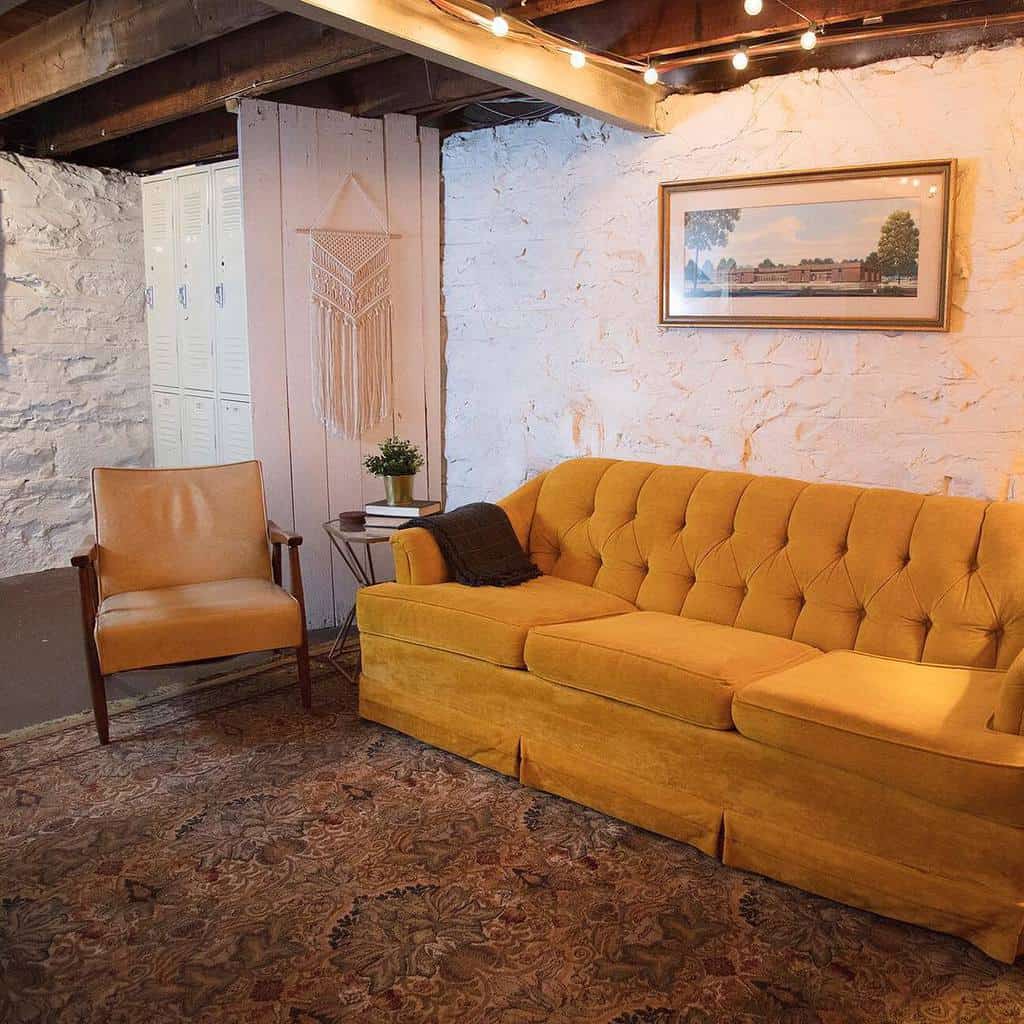
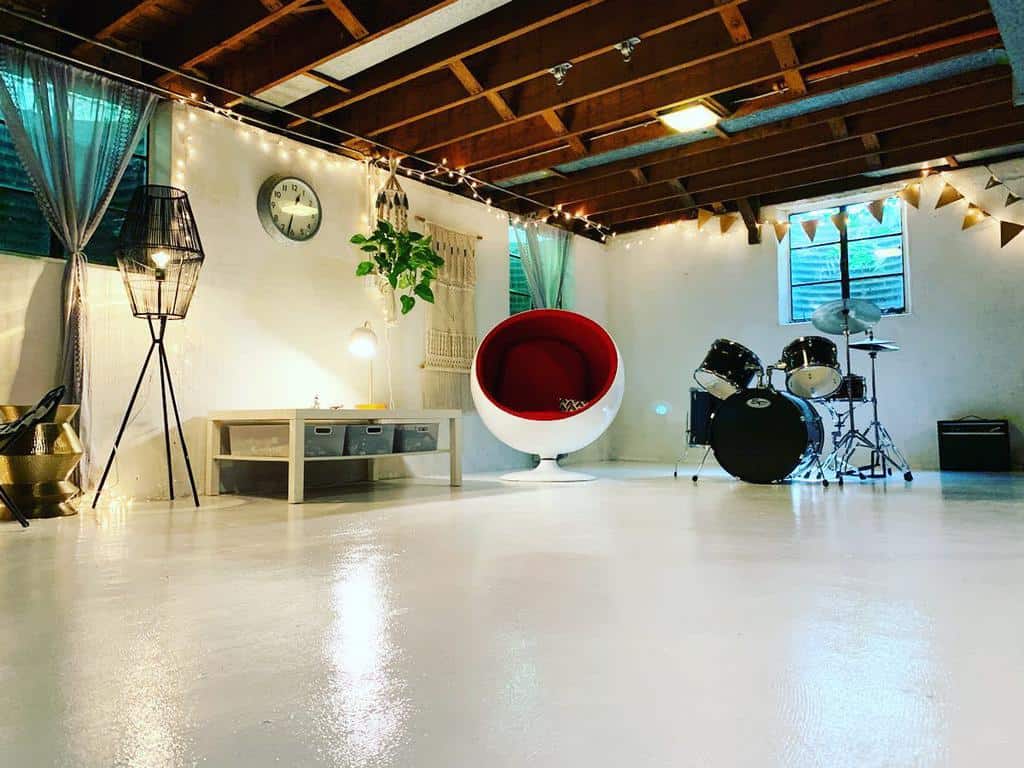

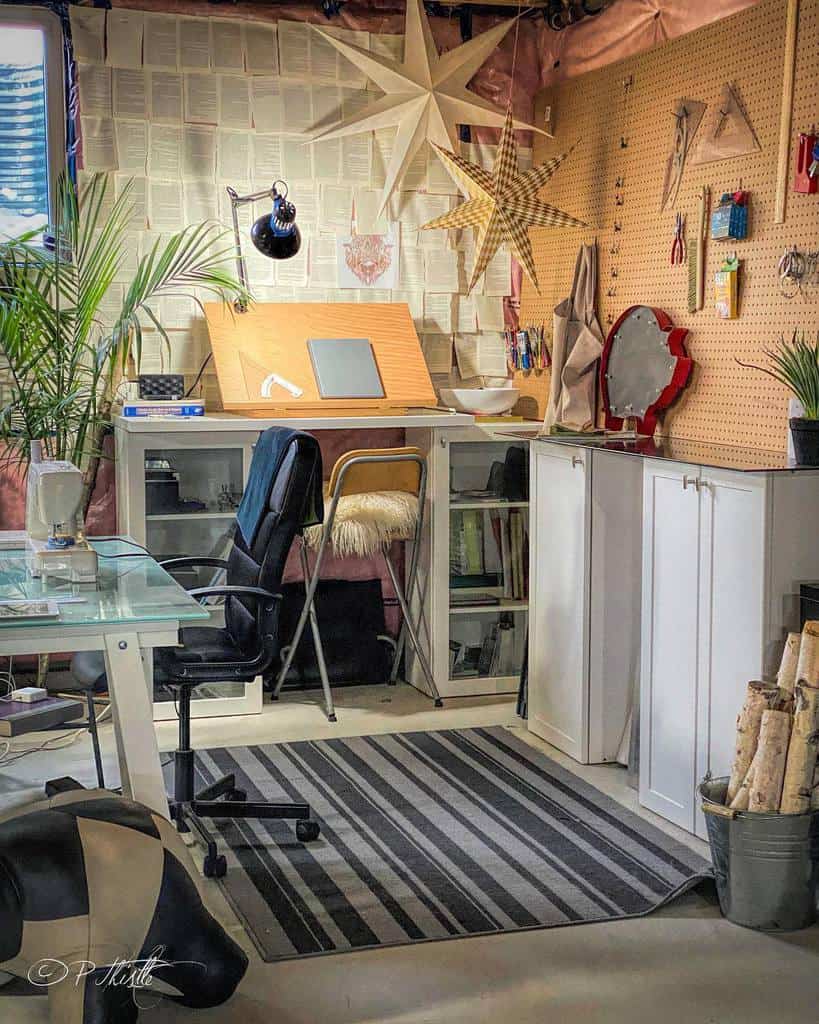
8. Versatile and Resilient
Laying vinyl plank flooring or a laminate floor can mimic the look of a hardwood floor. These are engineered planks that you clip together.
Most modern options don’t require you to lay down a vapor barrier because this and a cushion pad are built into the vinyl planks. Luxury vinyl flooring is multi-dimensional and textured to feel like the real thing.
You don’t have to commit to wood flooring if you want to use vinyl. Other options are vinyl tiles or sheet vinyl.
Tiles are individual squares that you’ll glue to the floor. Match up the seams of each square to create a continuous pattern. Sheet vinyl is a large roll that you lay down and unroll while gluing it to the floor underneath.

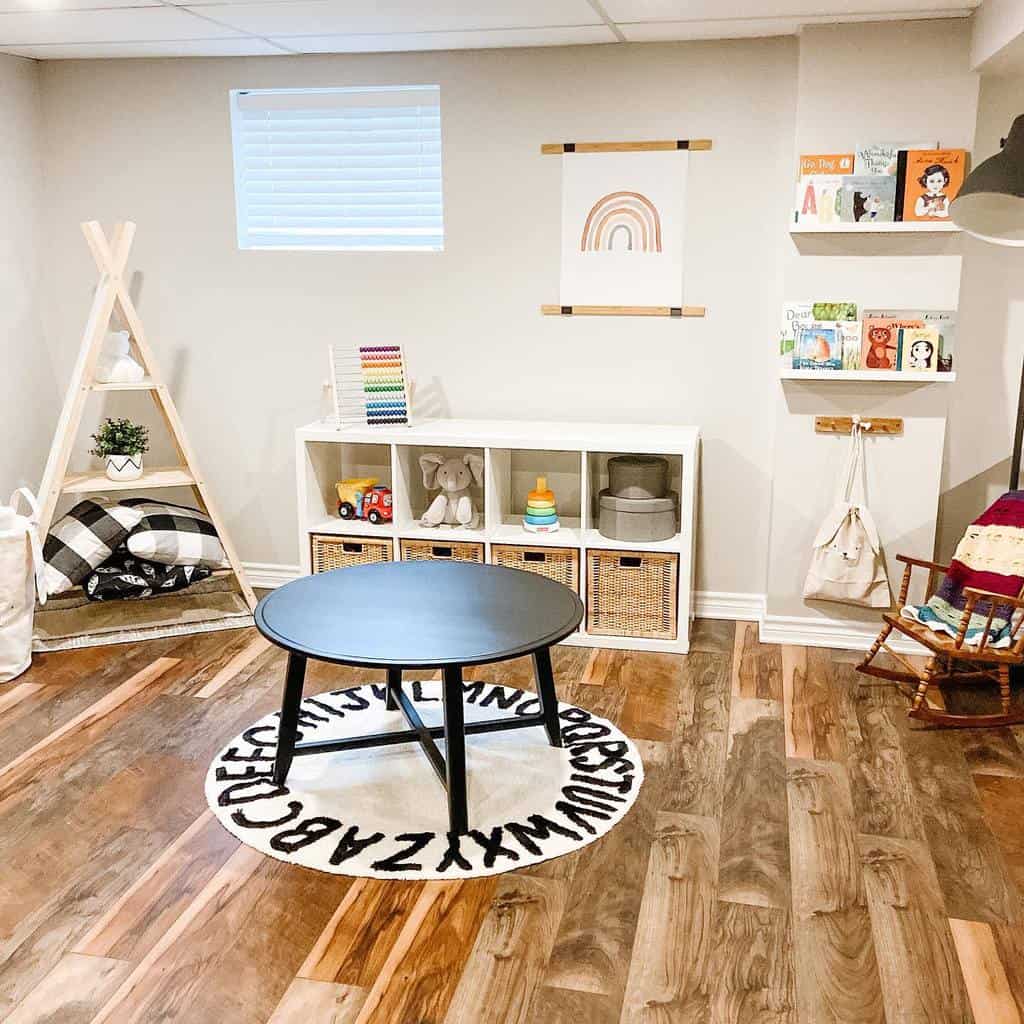

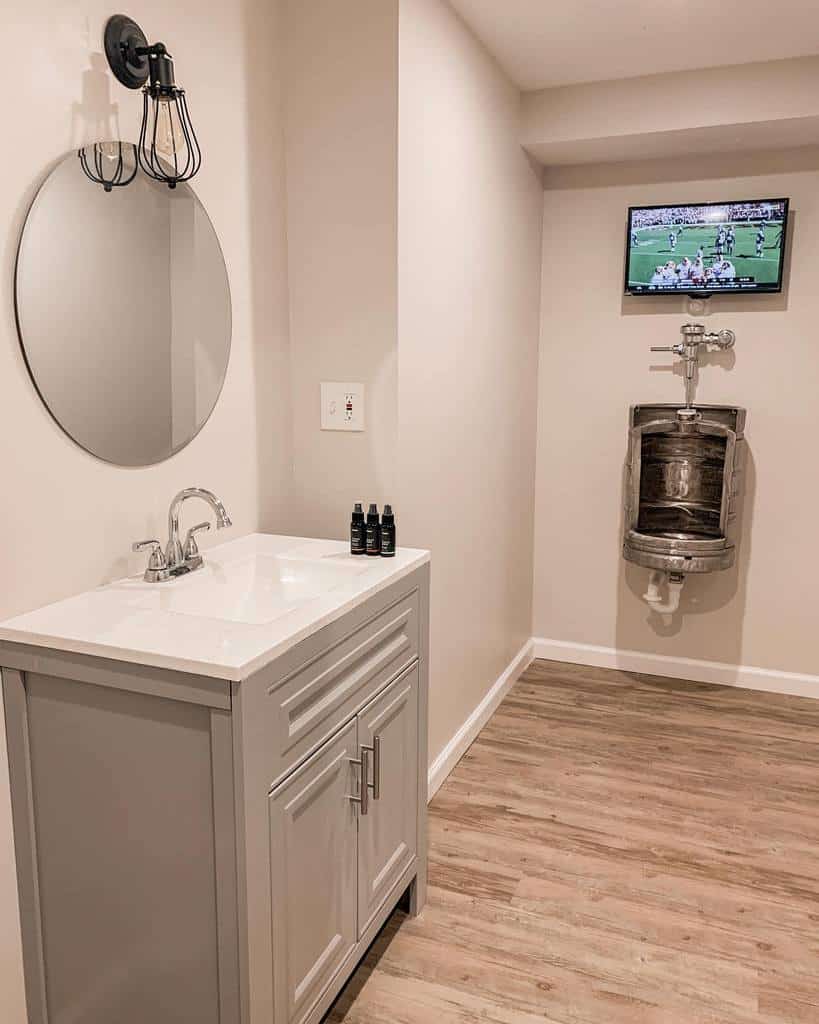
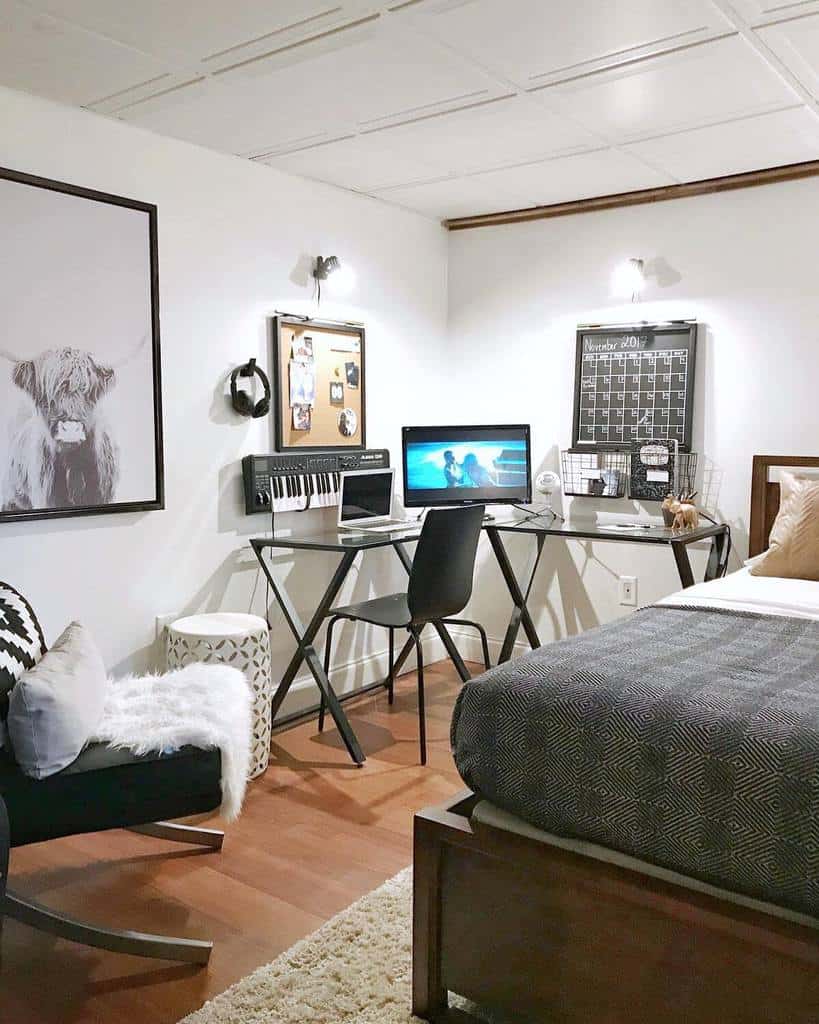
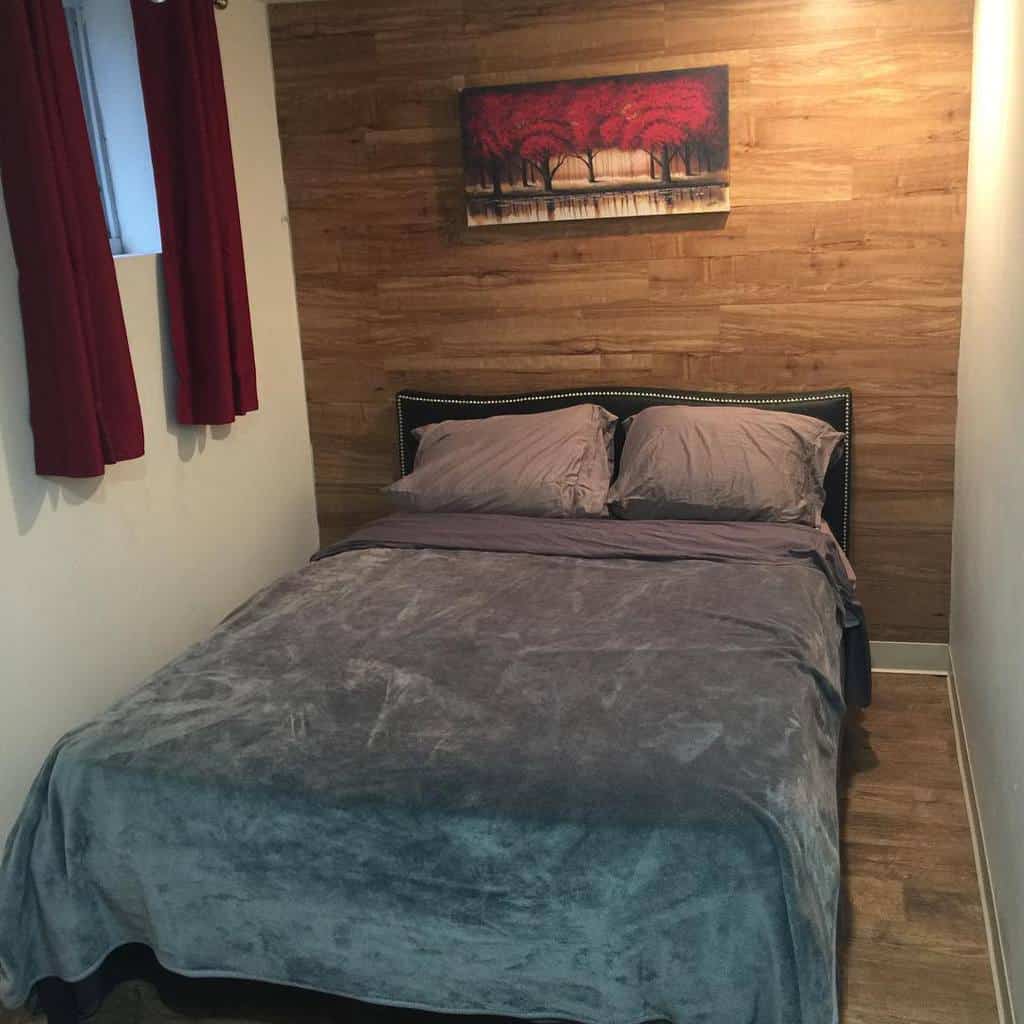
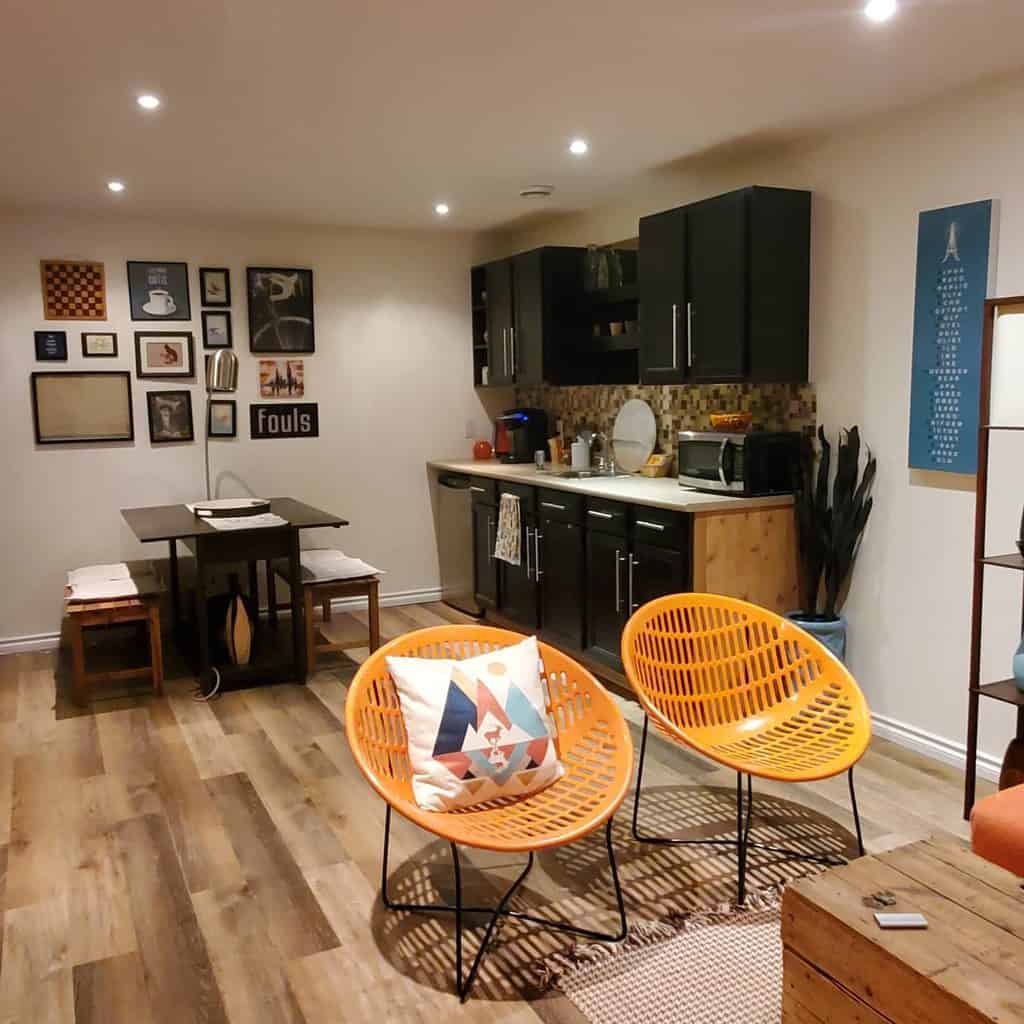
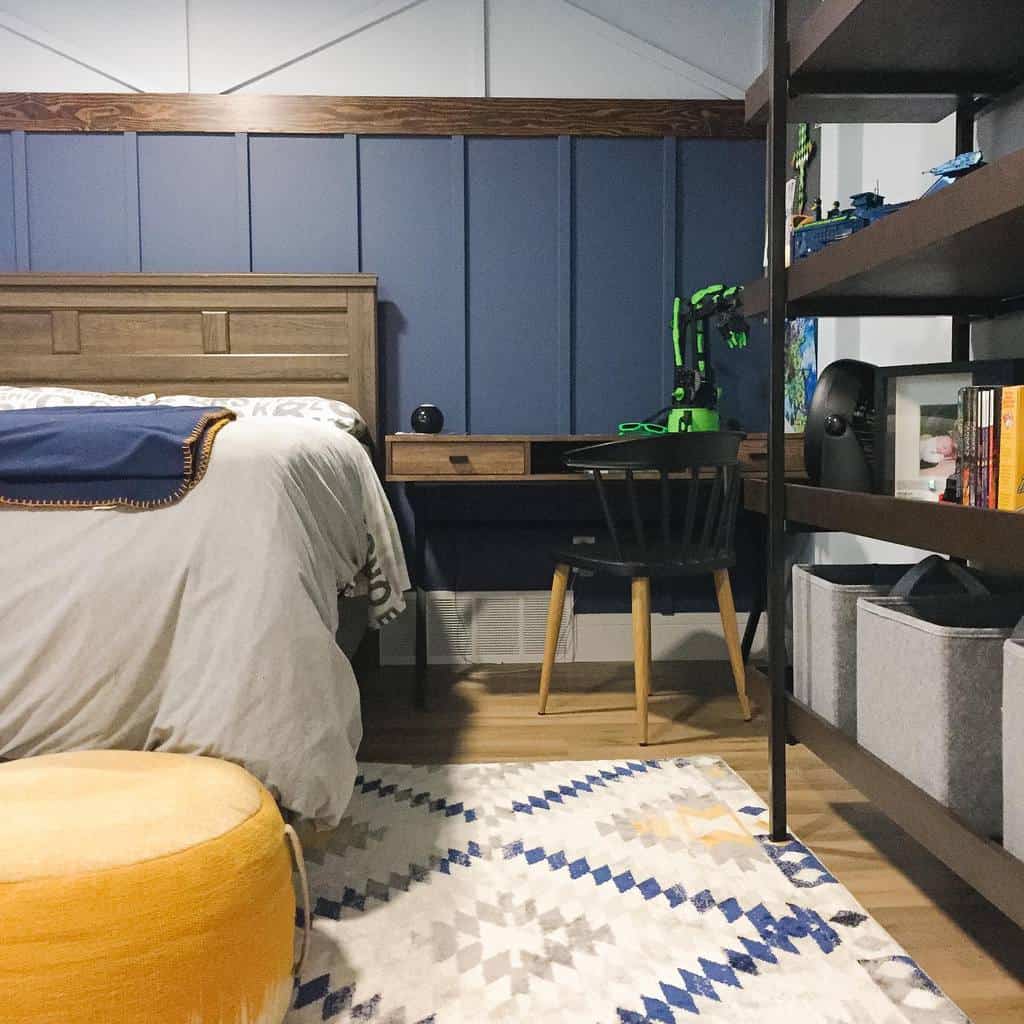
9. Warmth and Character
Wood flooring in your basement will give it a warmer feeling. If you have the budget, you could use hardwood flooring.
However, a more affordable option is to use engineered wood flooring. These are easy-to-assemble planks that connect together to provide you the look of a hardwood floor but are more affordable.
Engineered hardwood comes in varying qualities, so look for the best quality you can afford to ensure longevity and looks.
Some high-quality wood floor options accurately mimic the look and feel of real hardwood. Consider laying down an additional vapor barrier before laying your floor. This will protect your flooring from moisture.


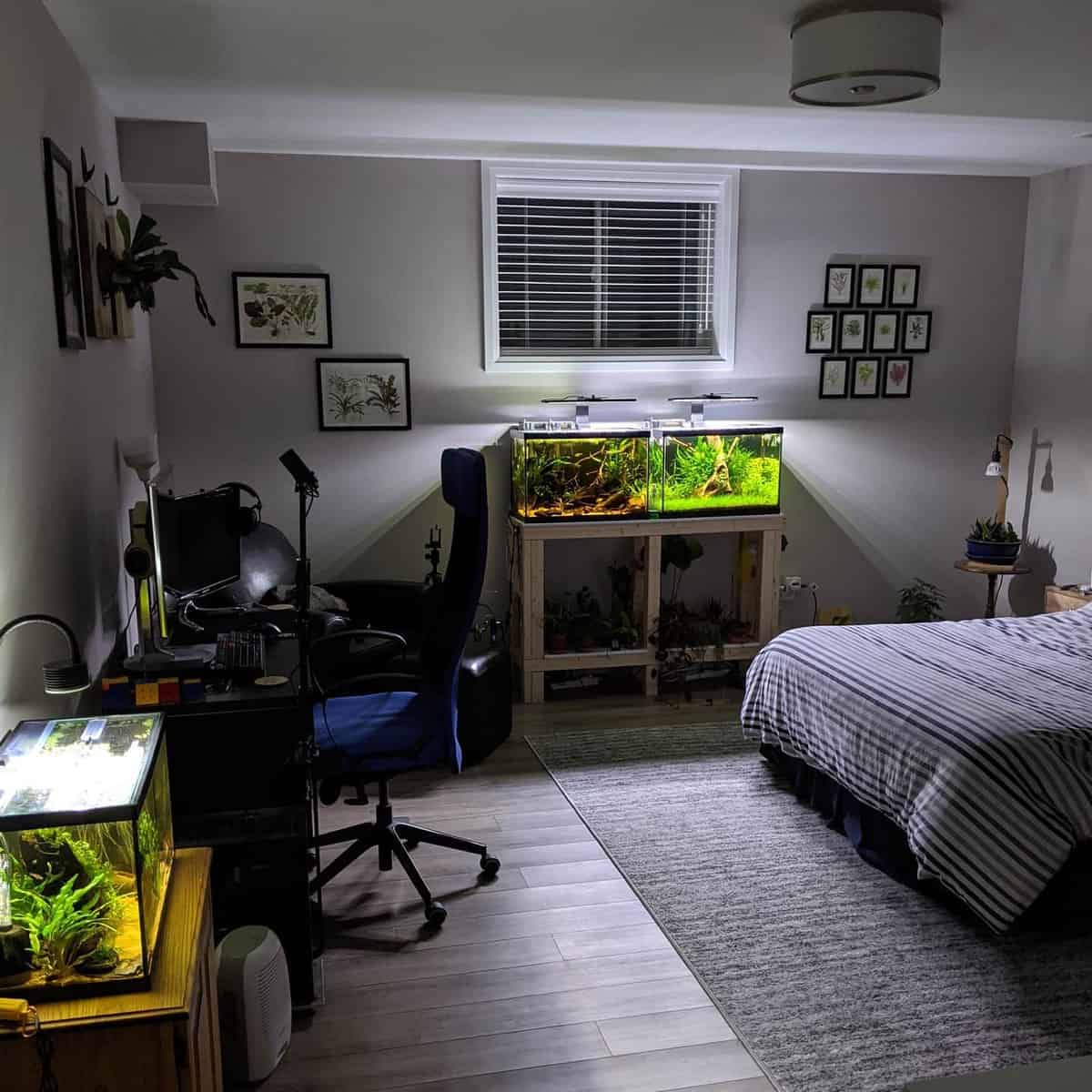
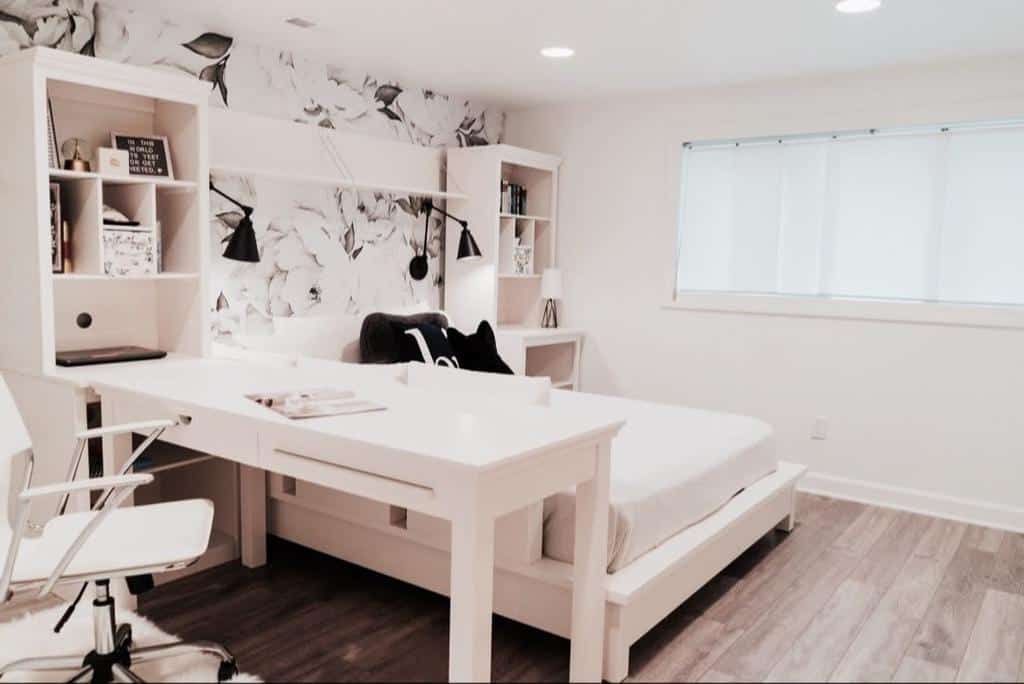



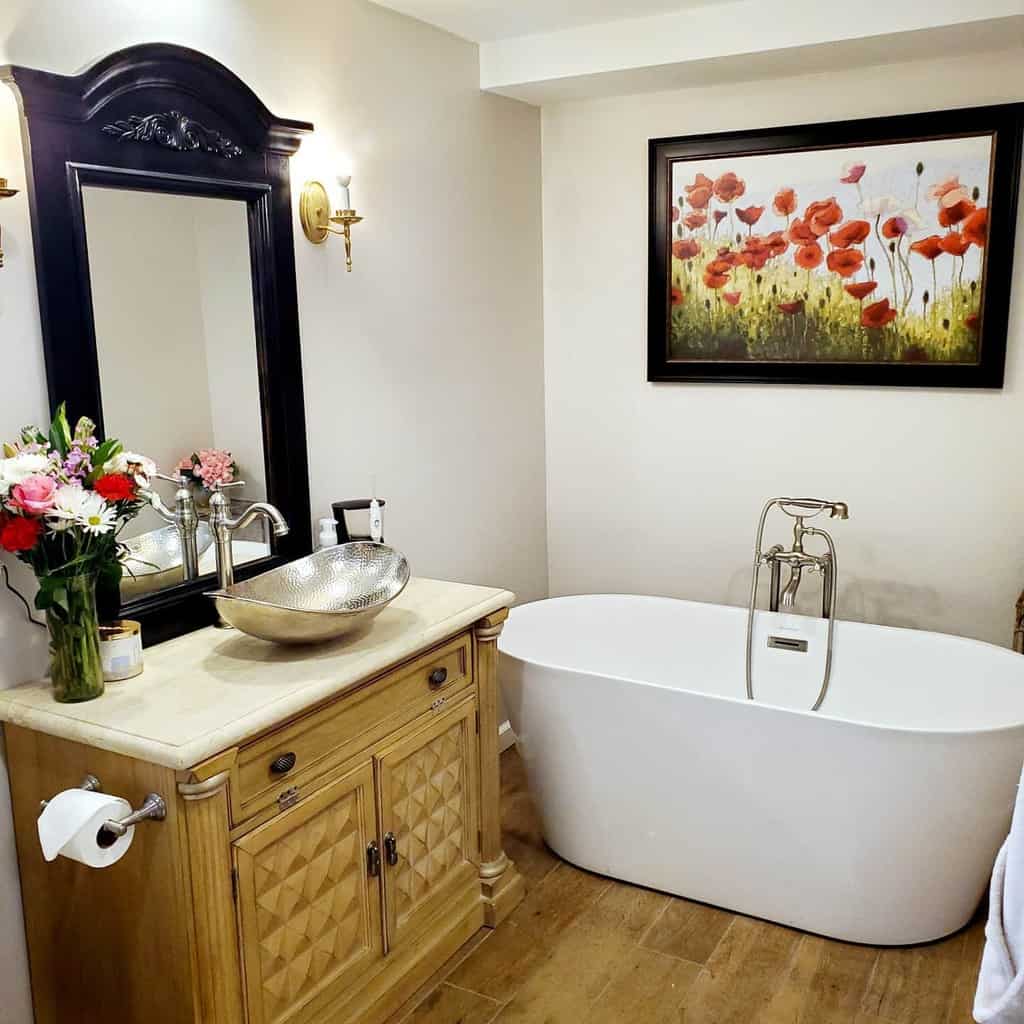
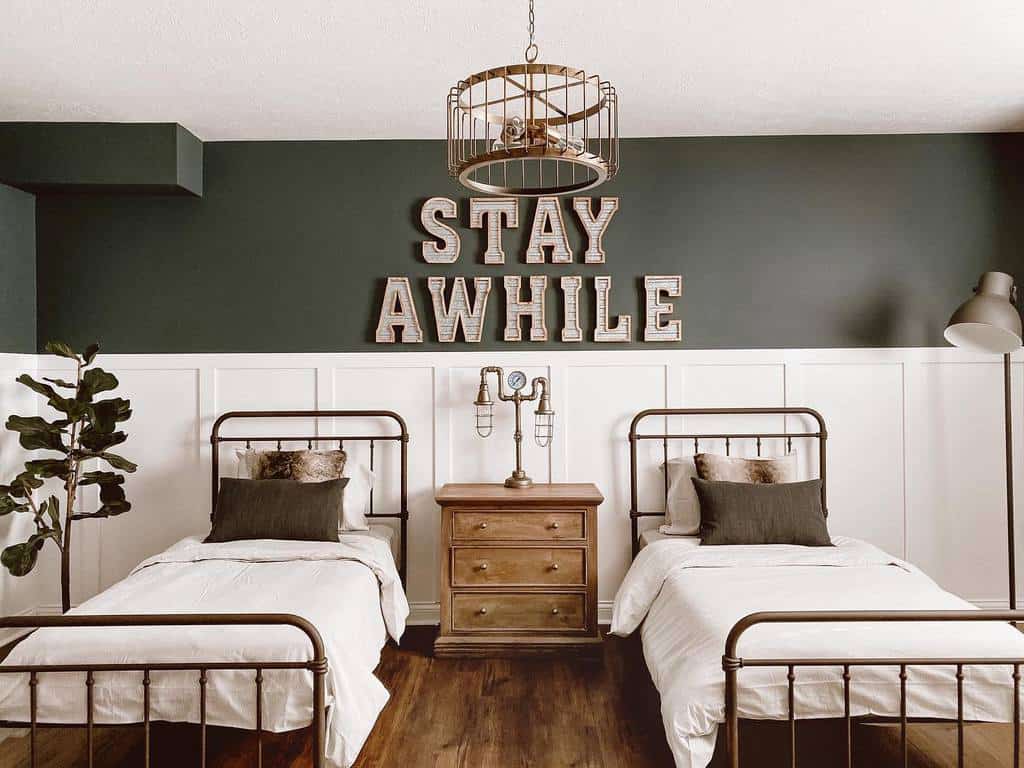
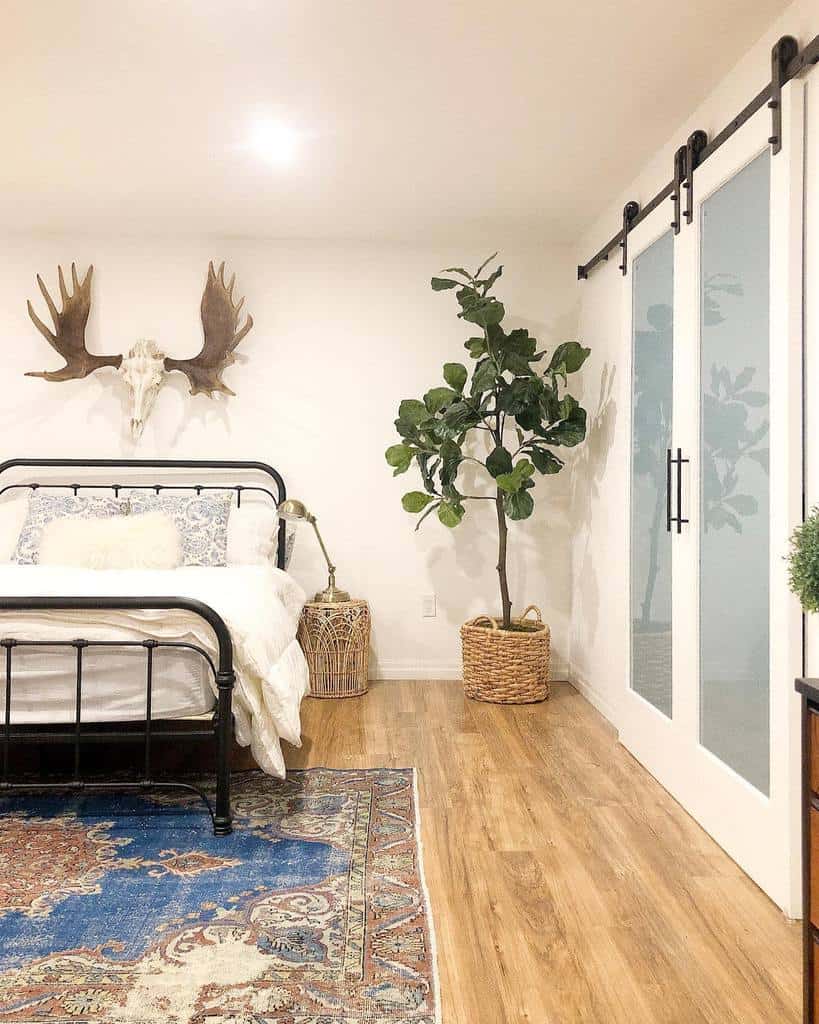
See more about - 74 Small Basement Ideas
Basement Floor FAQs
What is the best flooring for a basement cement floor?
Professional interior designers prefer to use ceramic tiles because they have tons of colors and style options. It also won’t be negatively affected by moisture. You can easily install it directly onto a smooth concrete surface. Vinyl tile is also another good option for installation directly onto concrete.
What is the cheapest way to finish a basement floor?
Your cheapest option is to pour epoxy onto your bare concrete floor. You could stain the concrete to give it a beautiful design and then use the epoxy to seal it and protect it. The next cheapest option is to use linoleum or vinyl. These are attractive and will give your floor a finished look.
Can mold grow under vinyl plank flooring?
While the flooring itself is impervious to moisture, if there’s standing water underneath the flooring, it can cause mold to grow underneath your planks. The most common places to find this excess water are around the edges and in the floor’s cracks or grooves.



